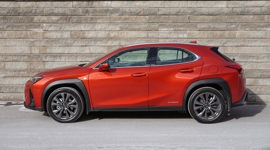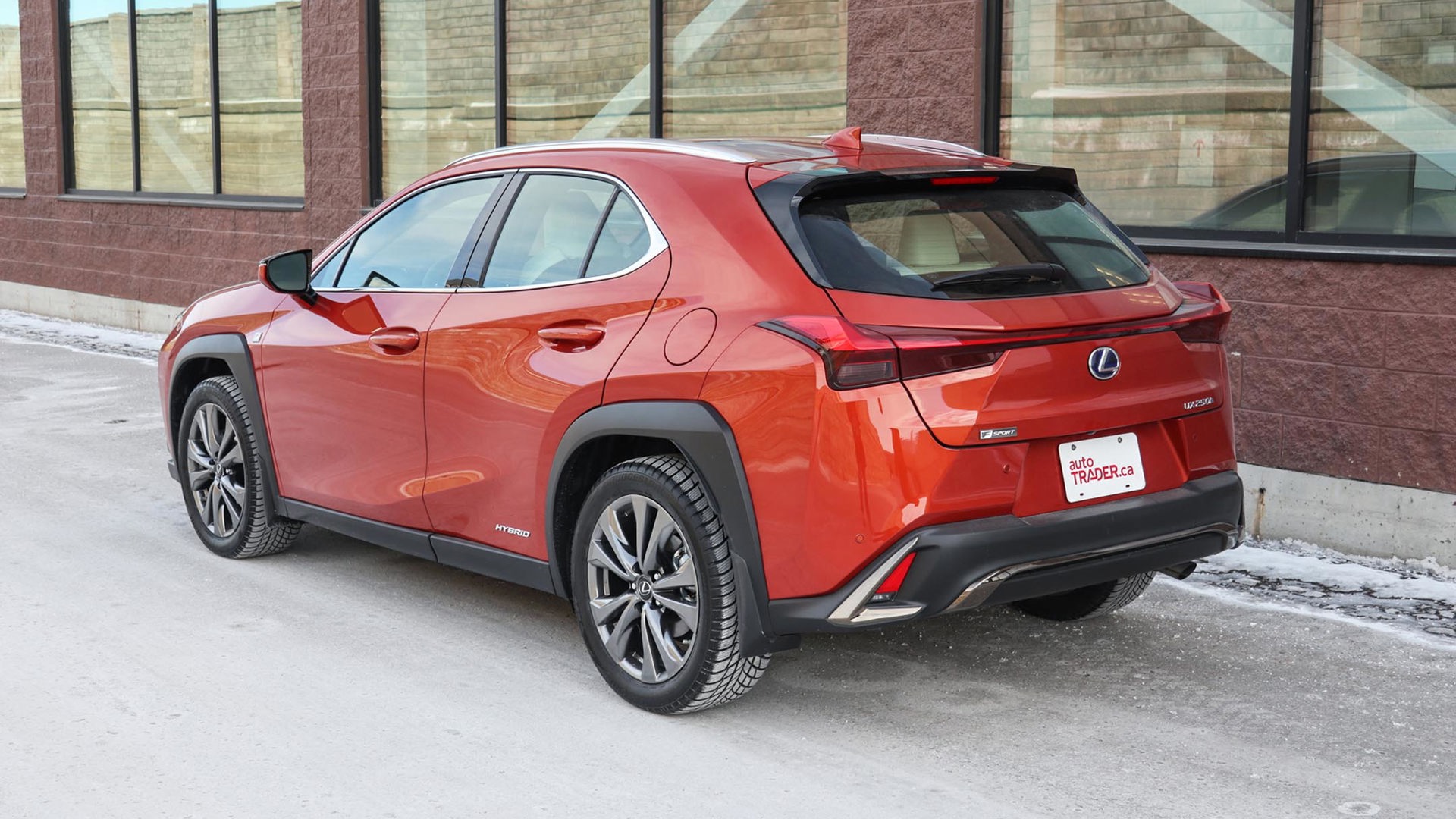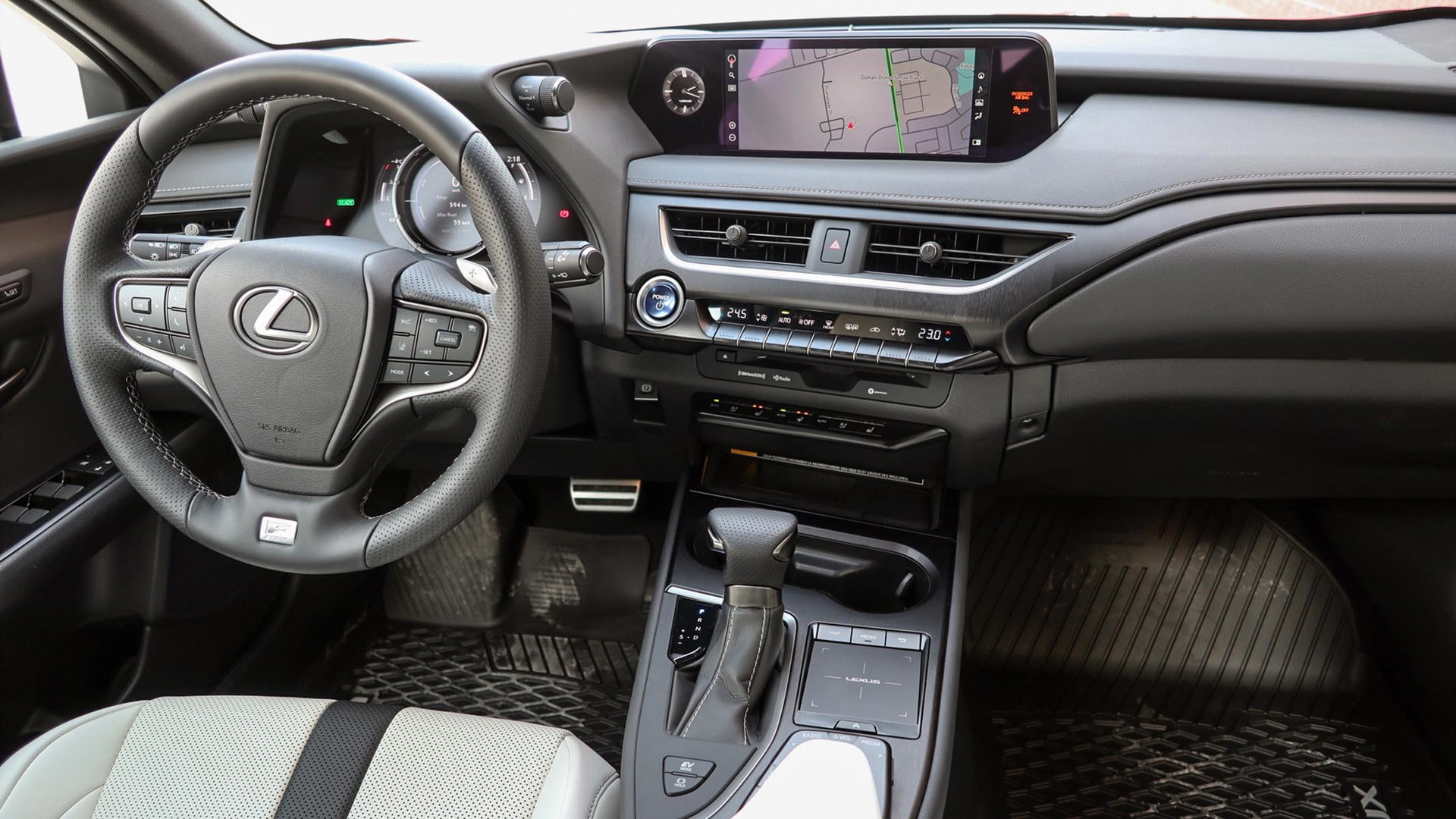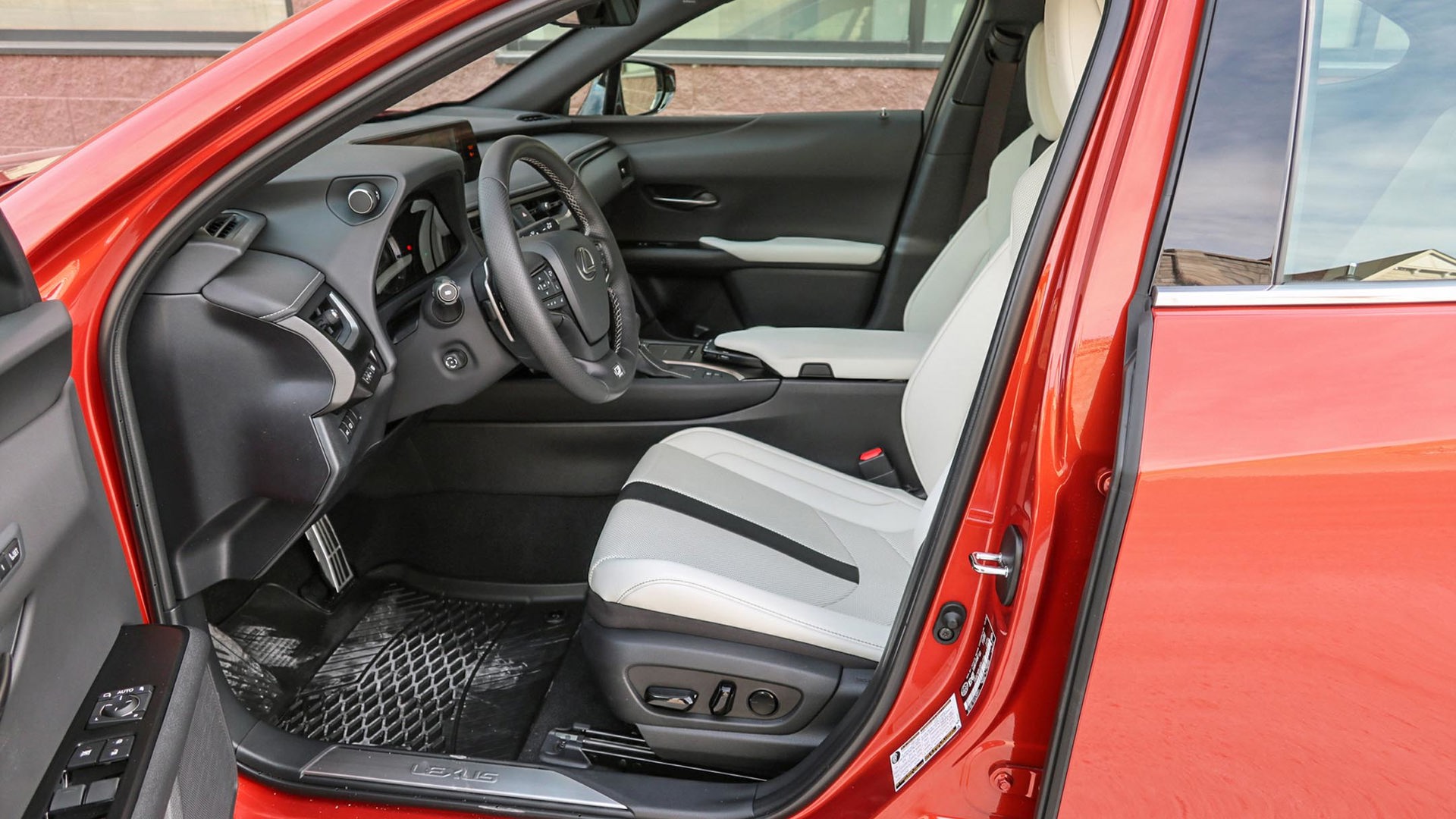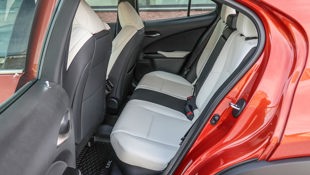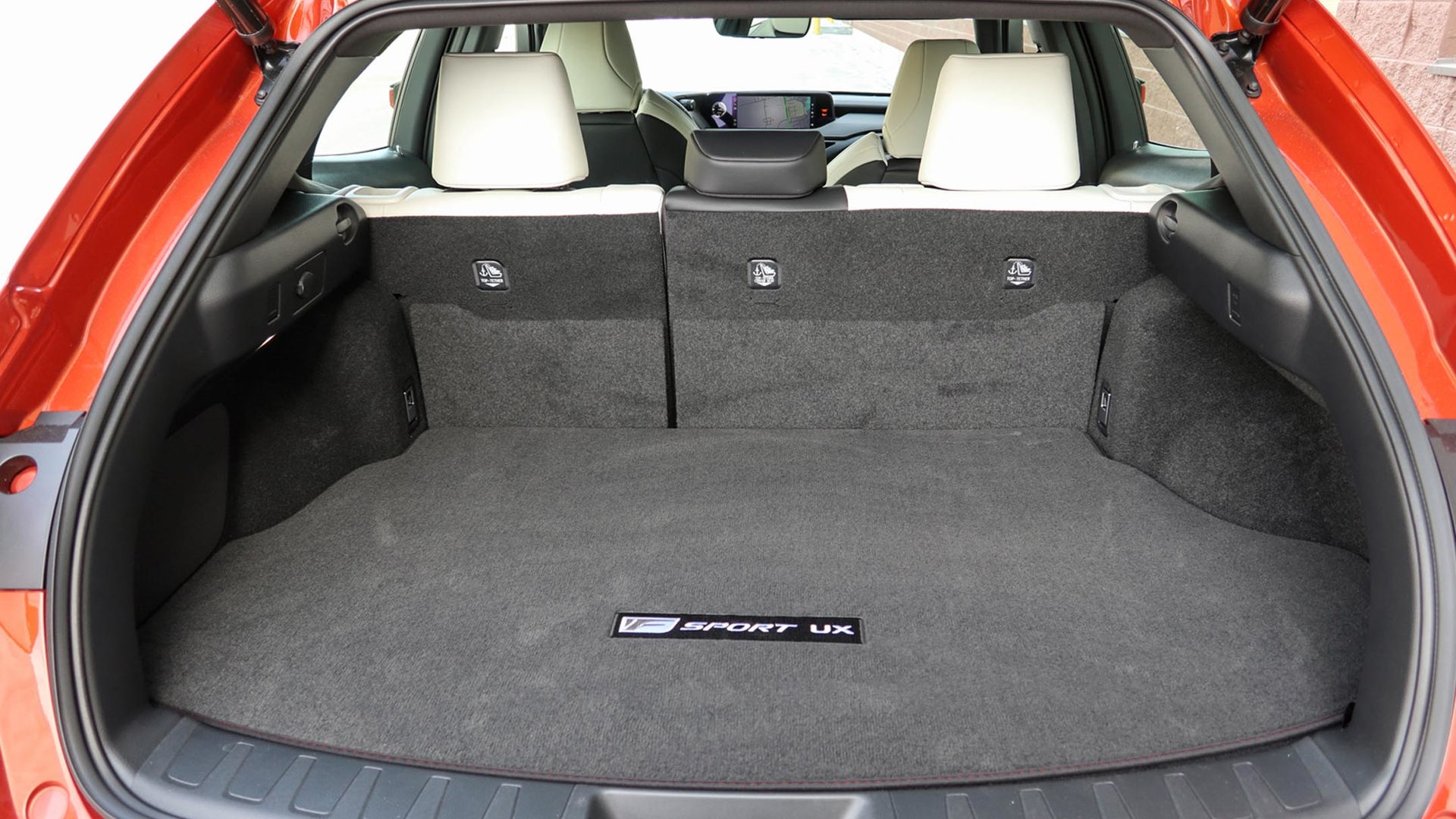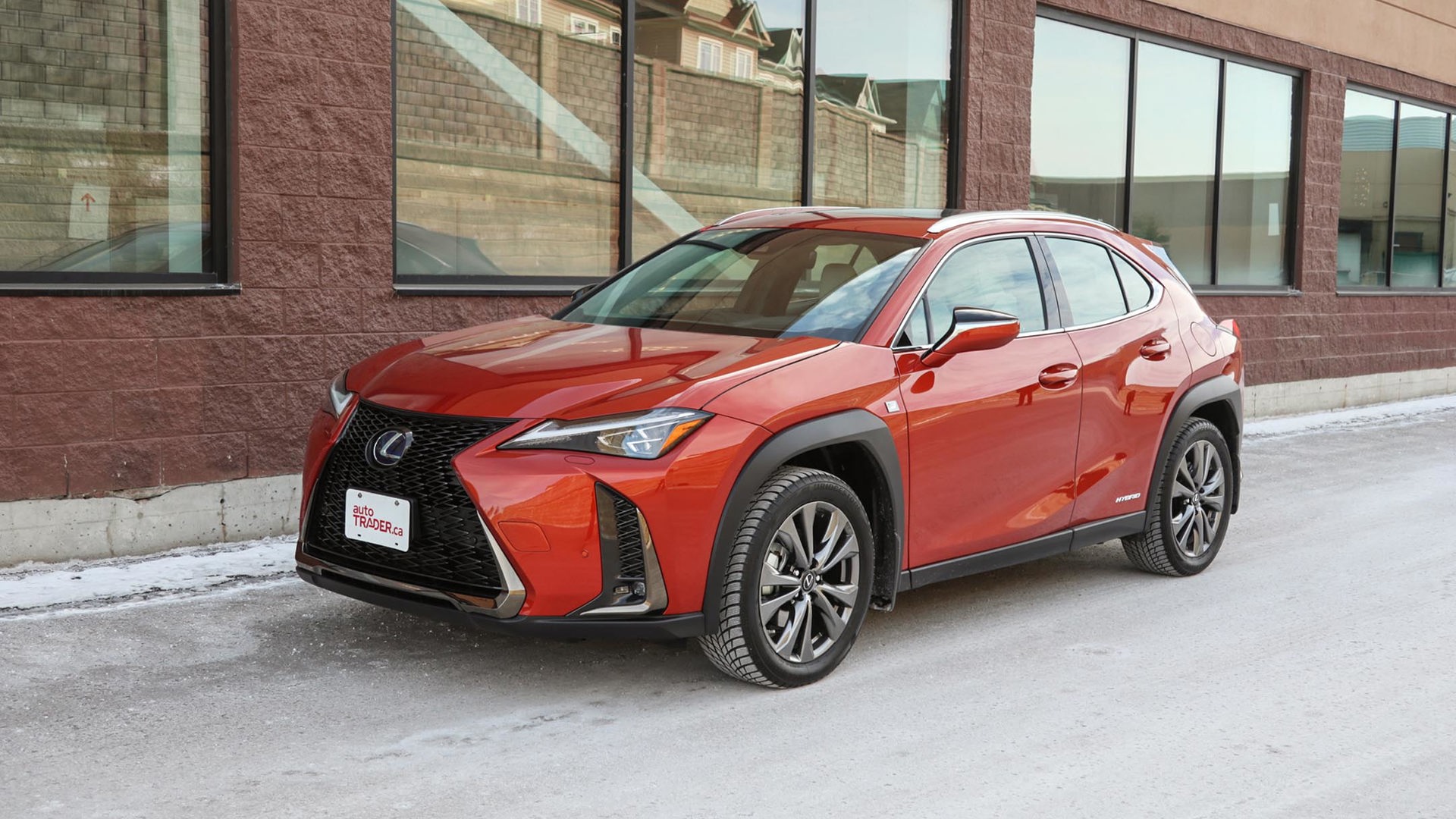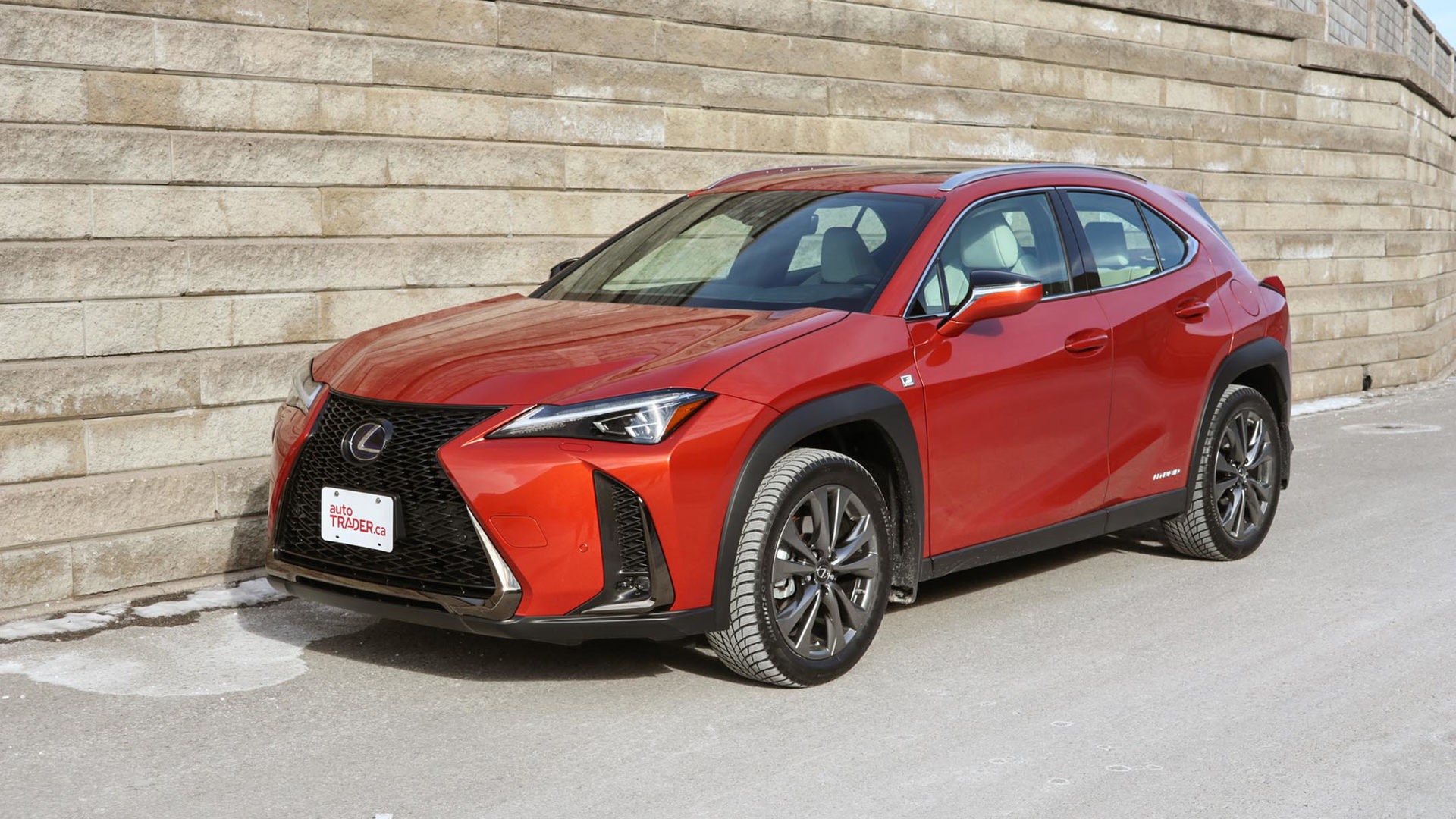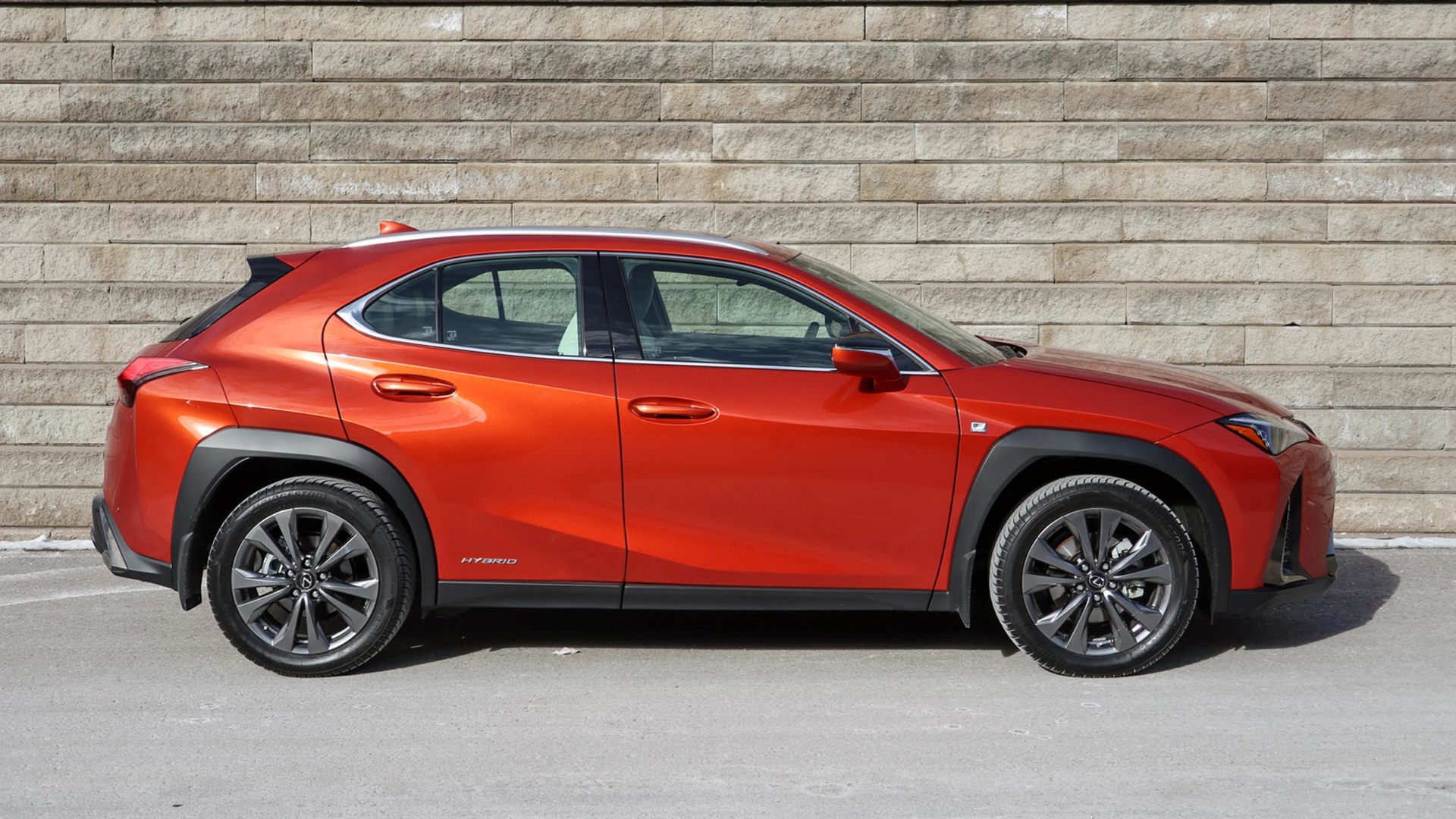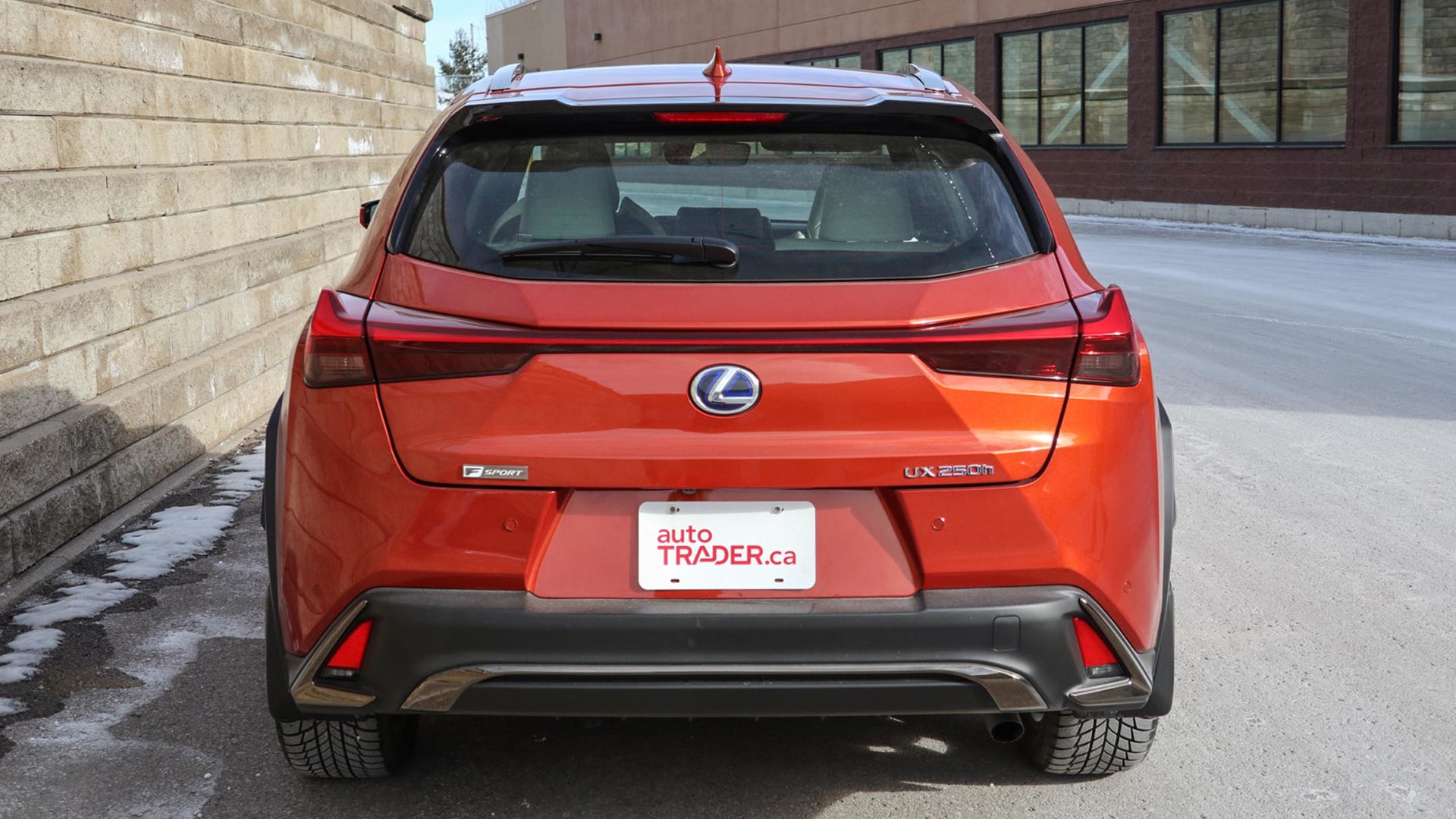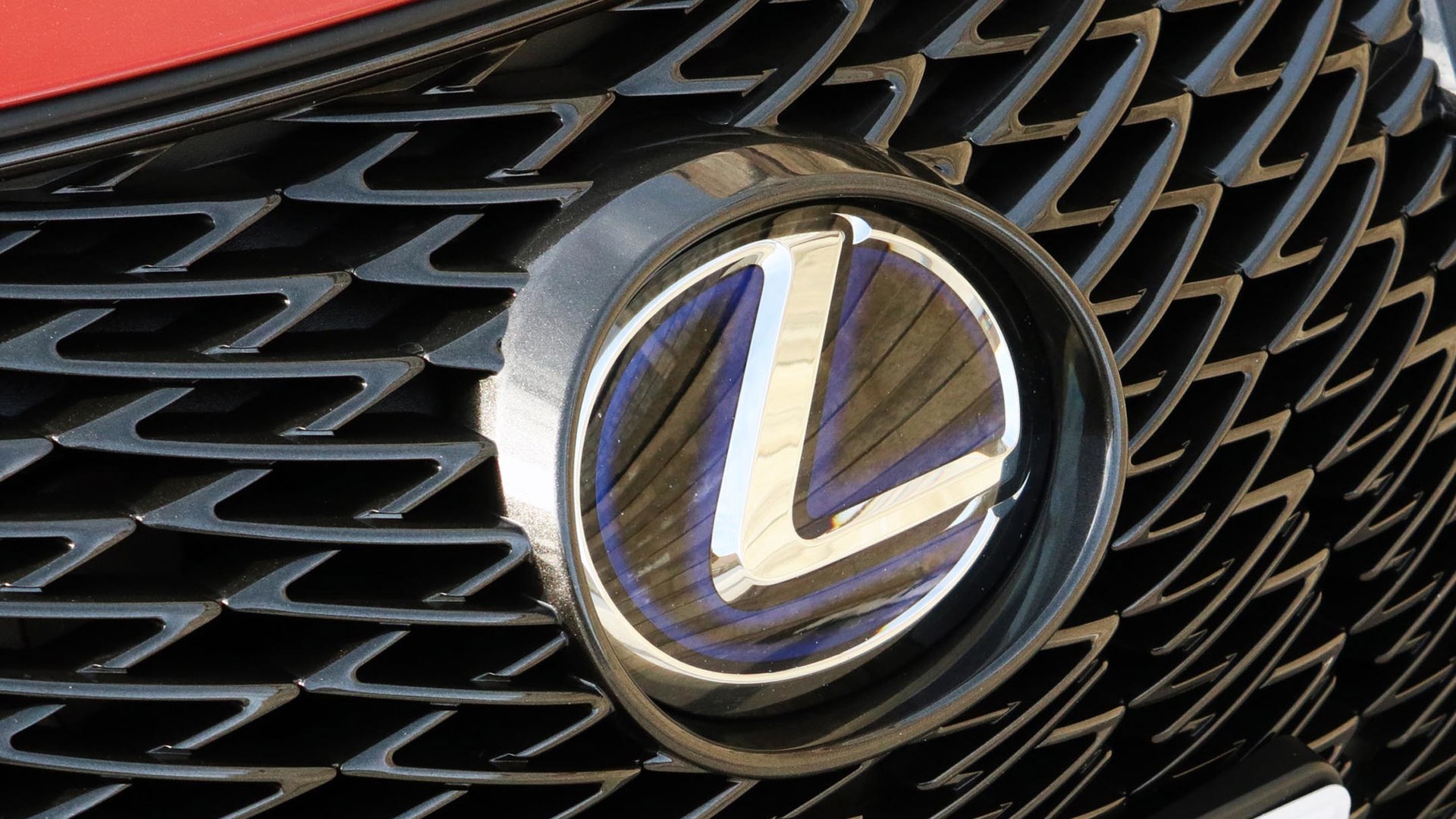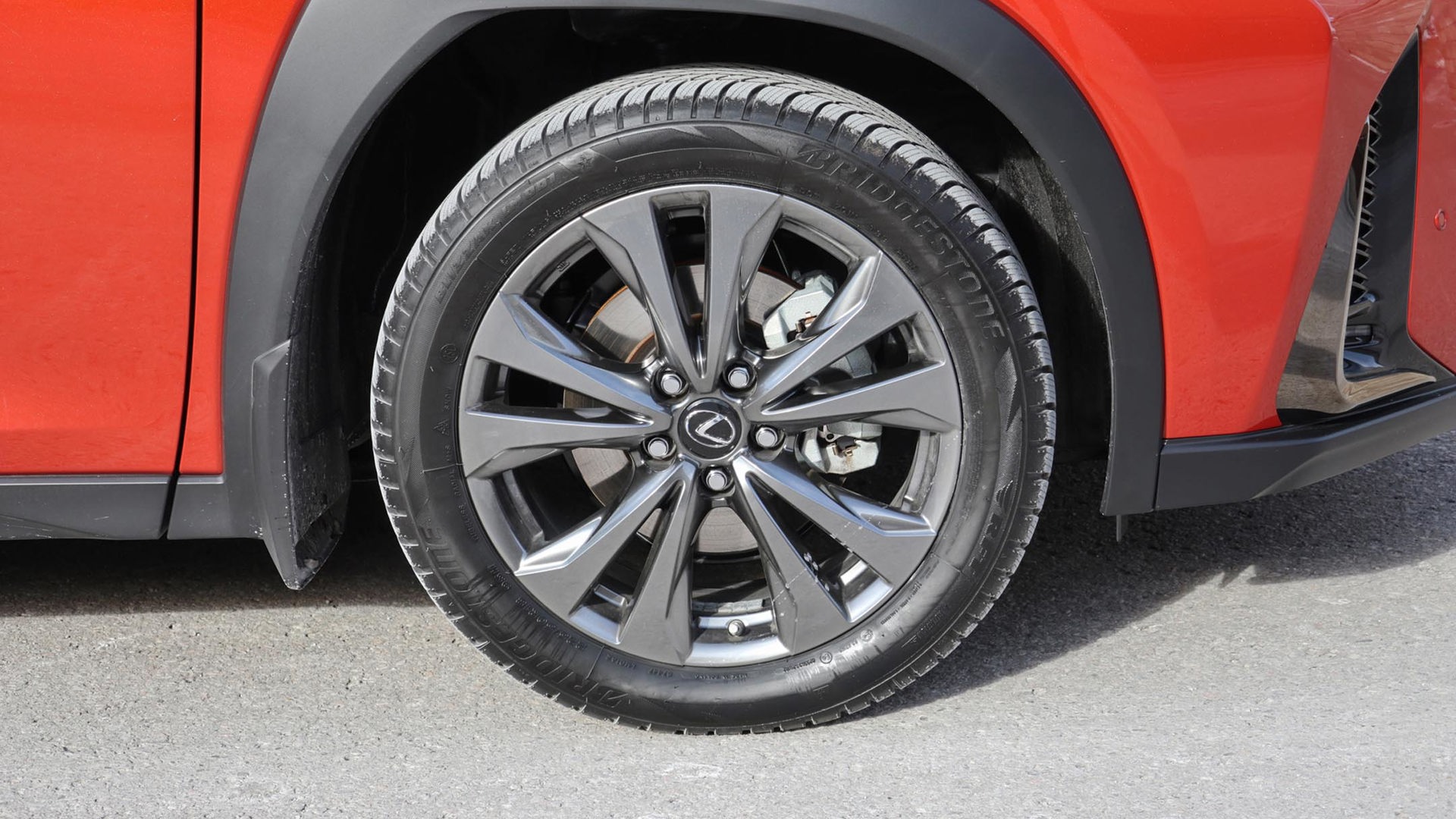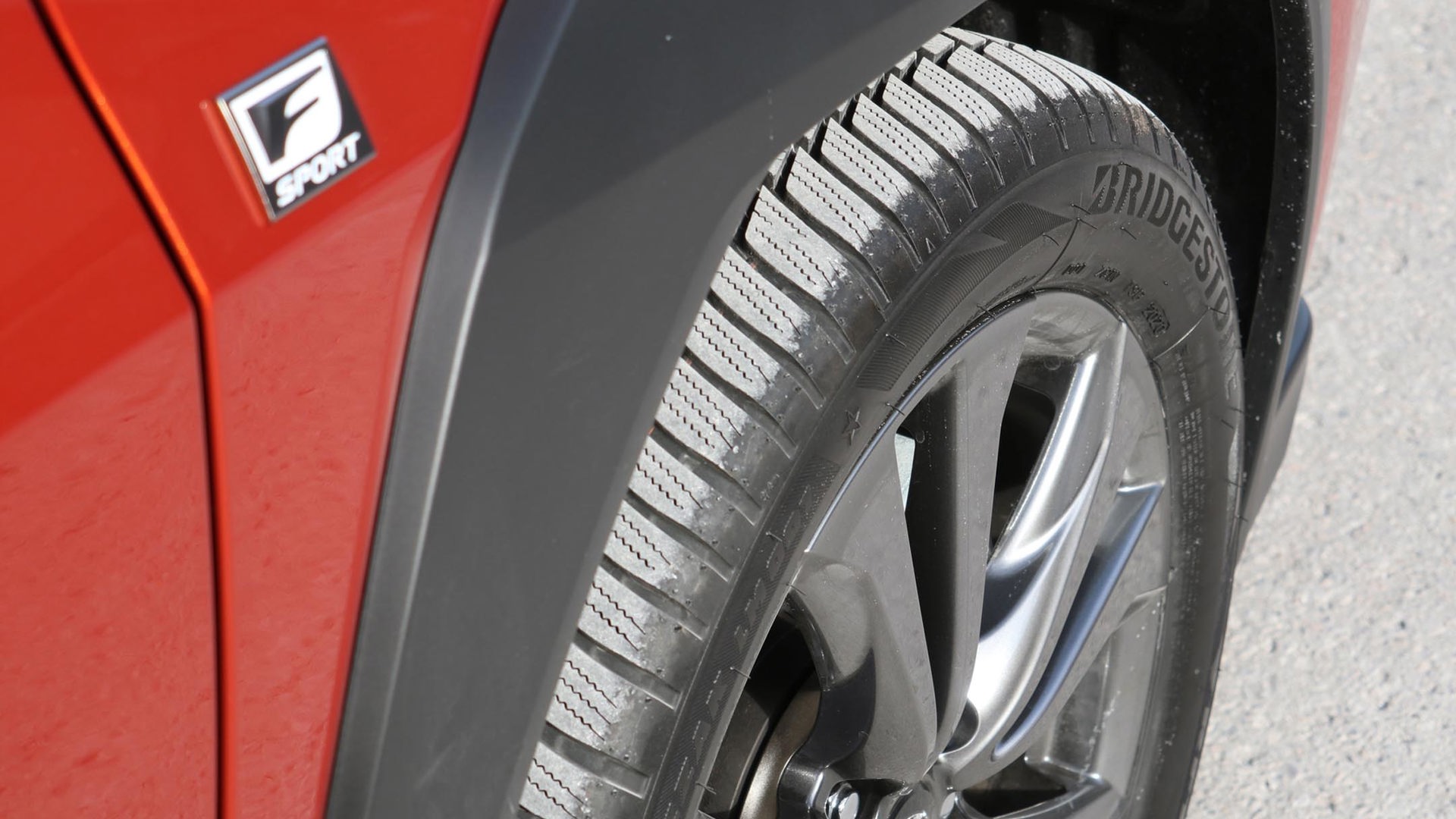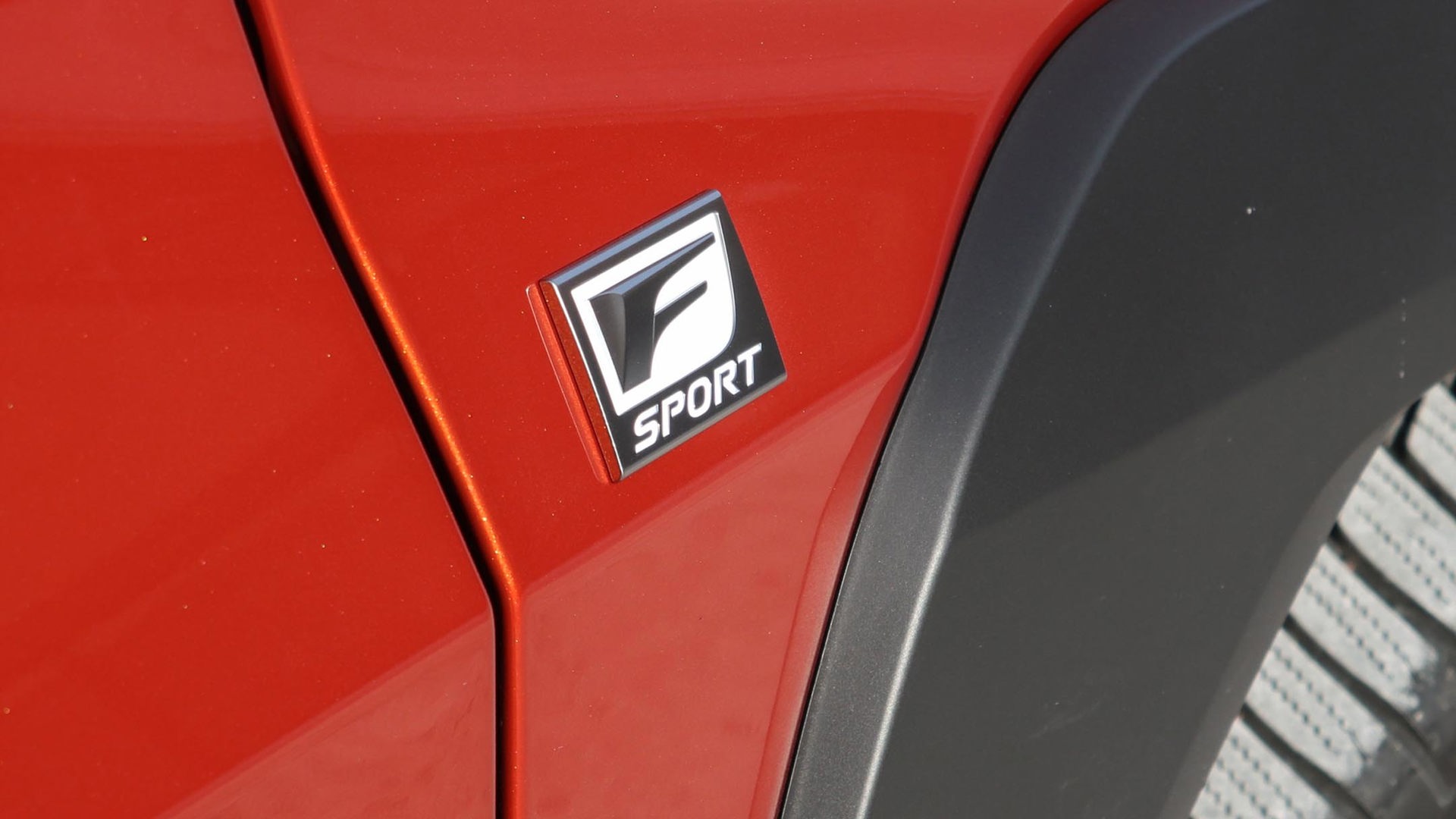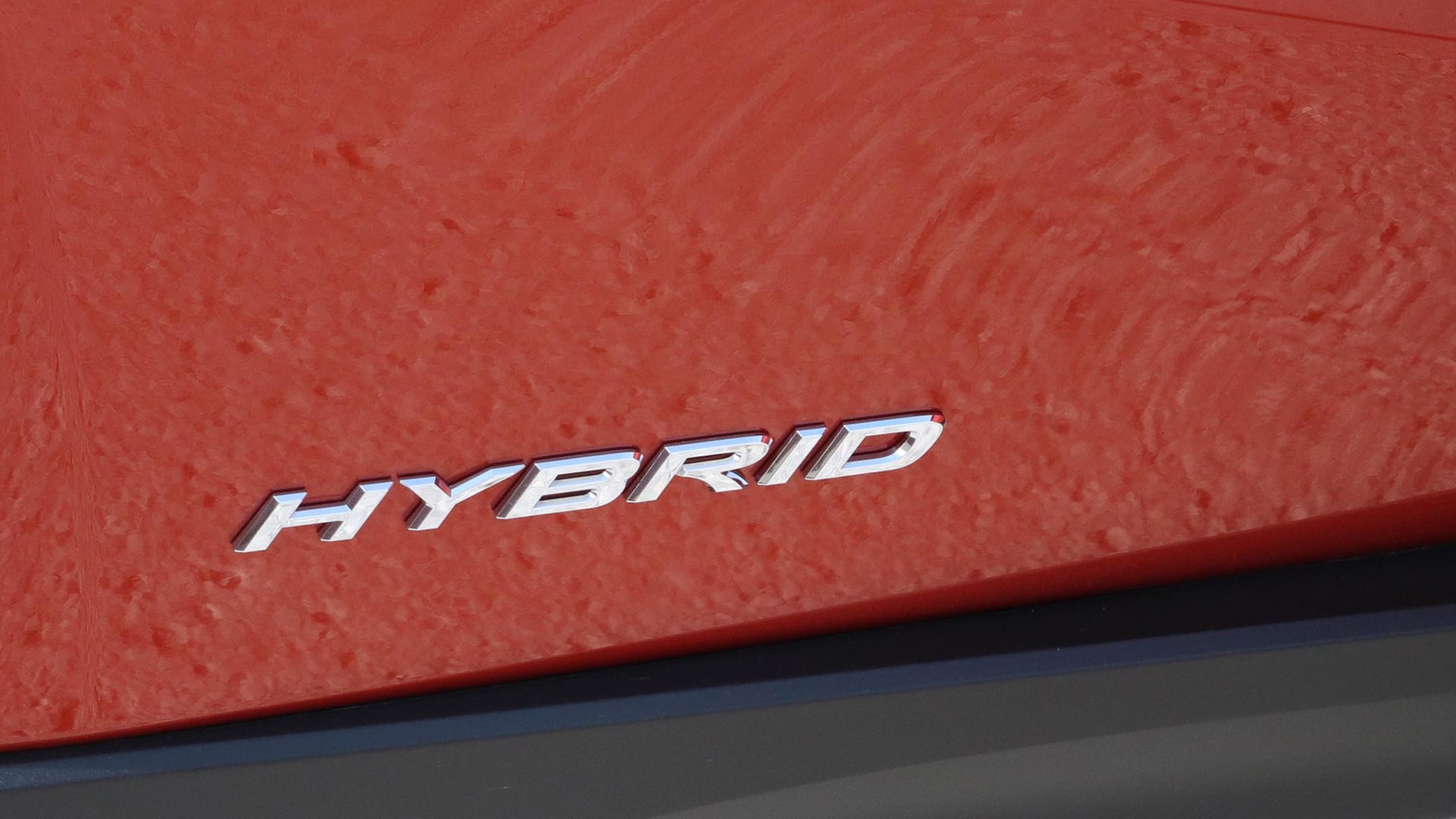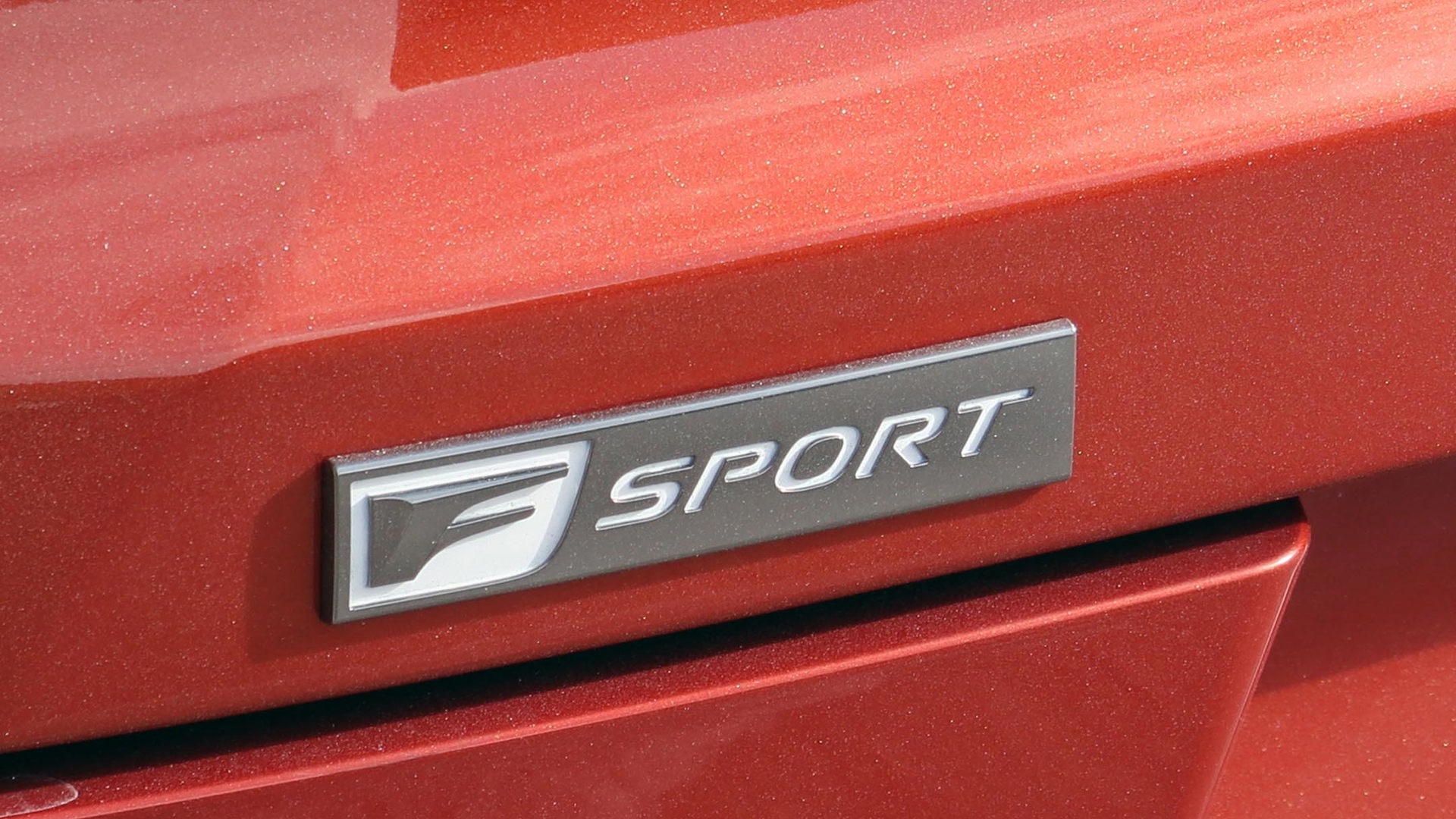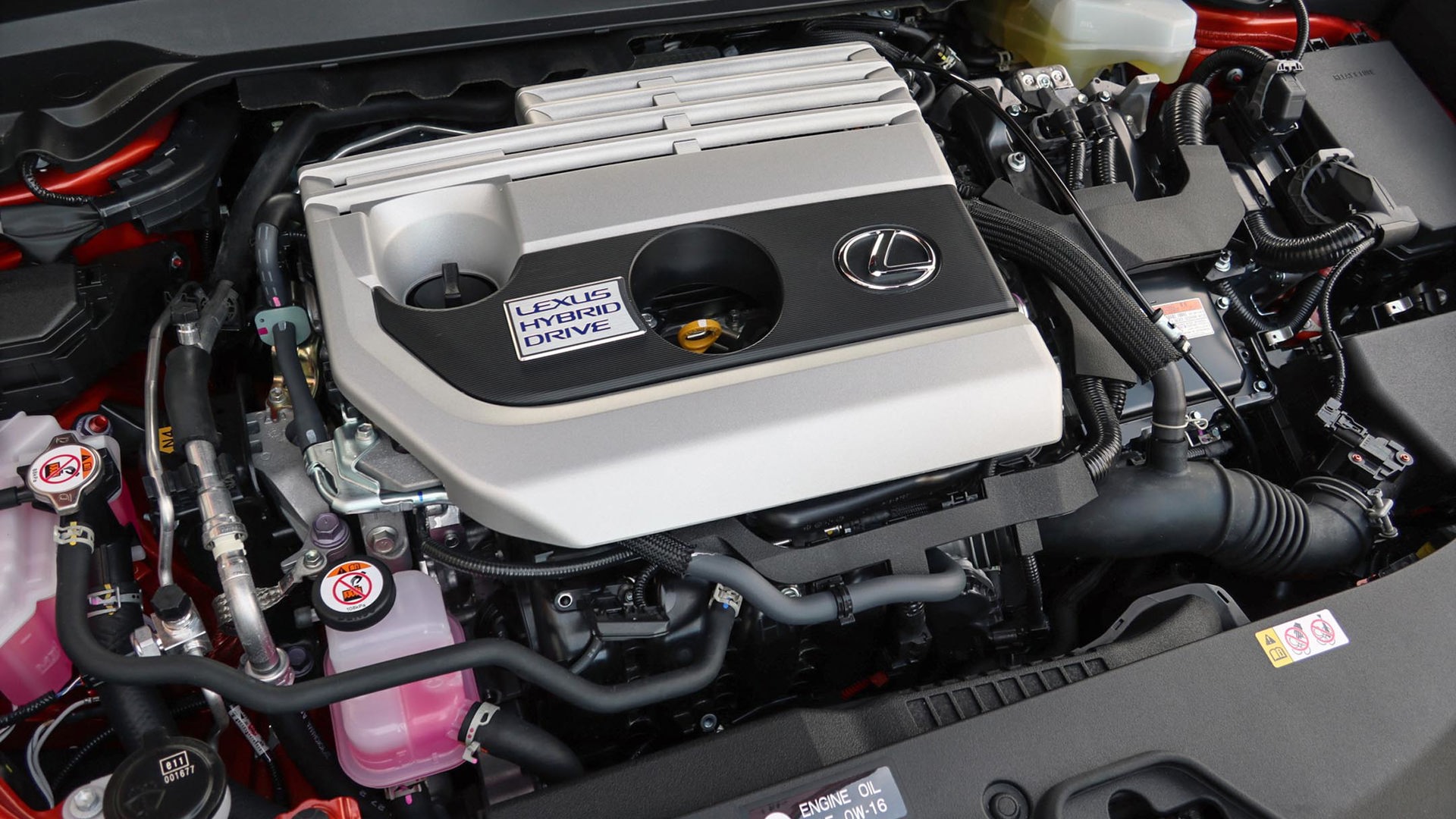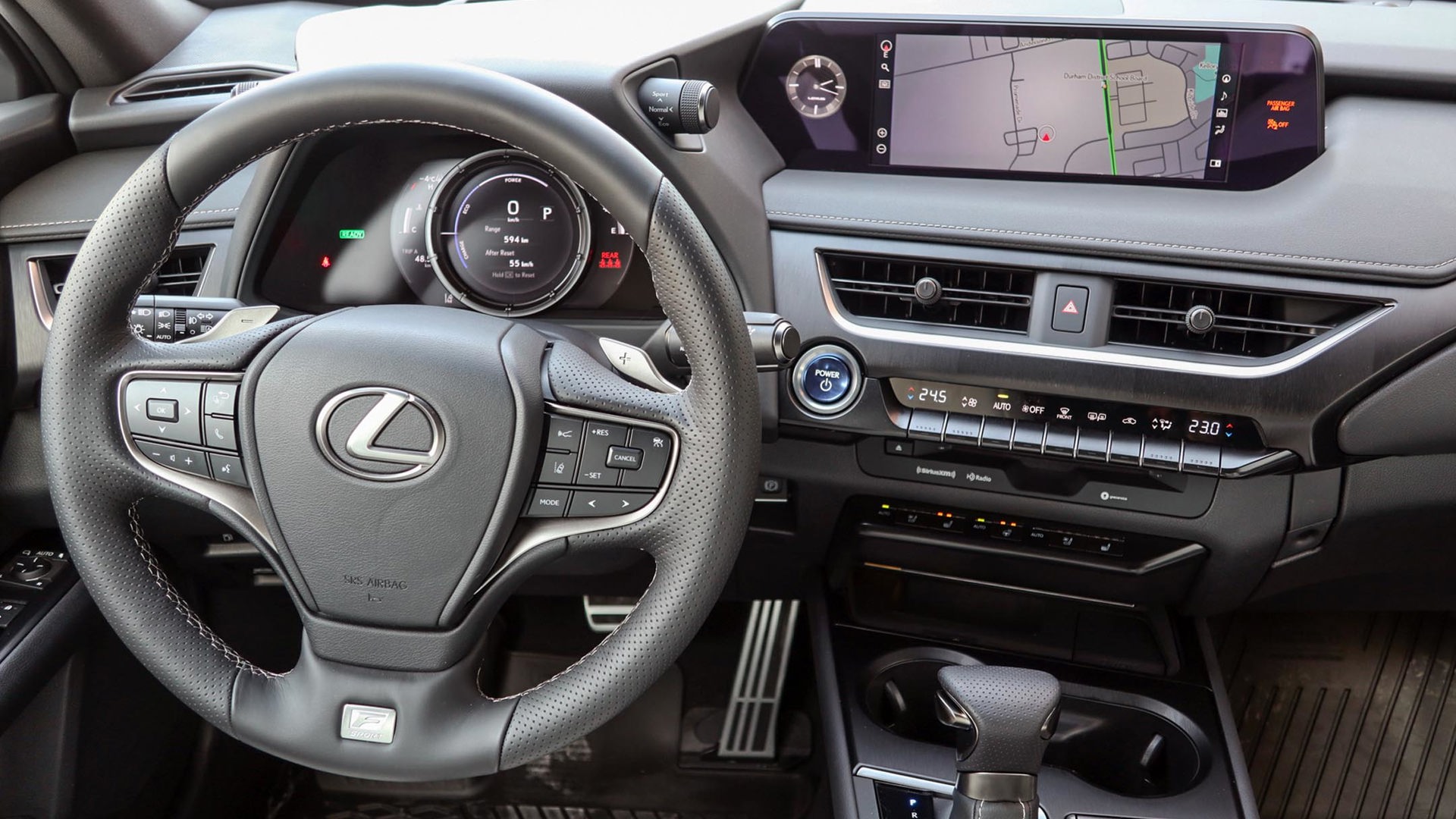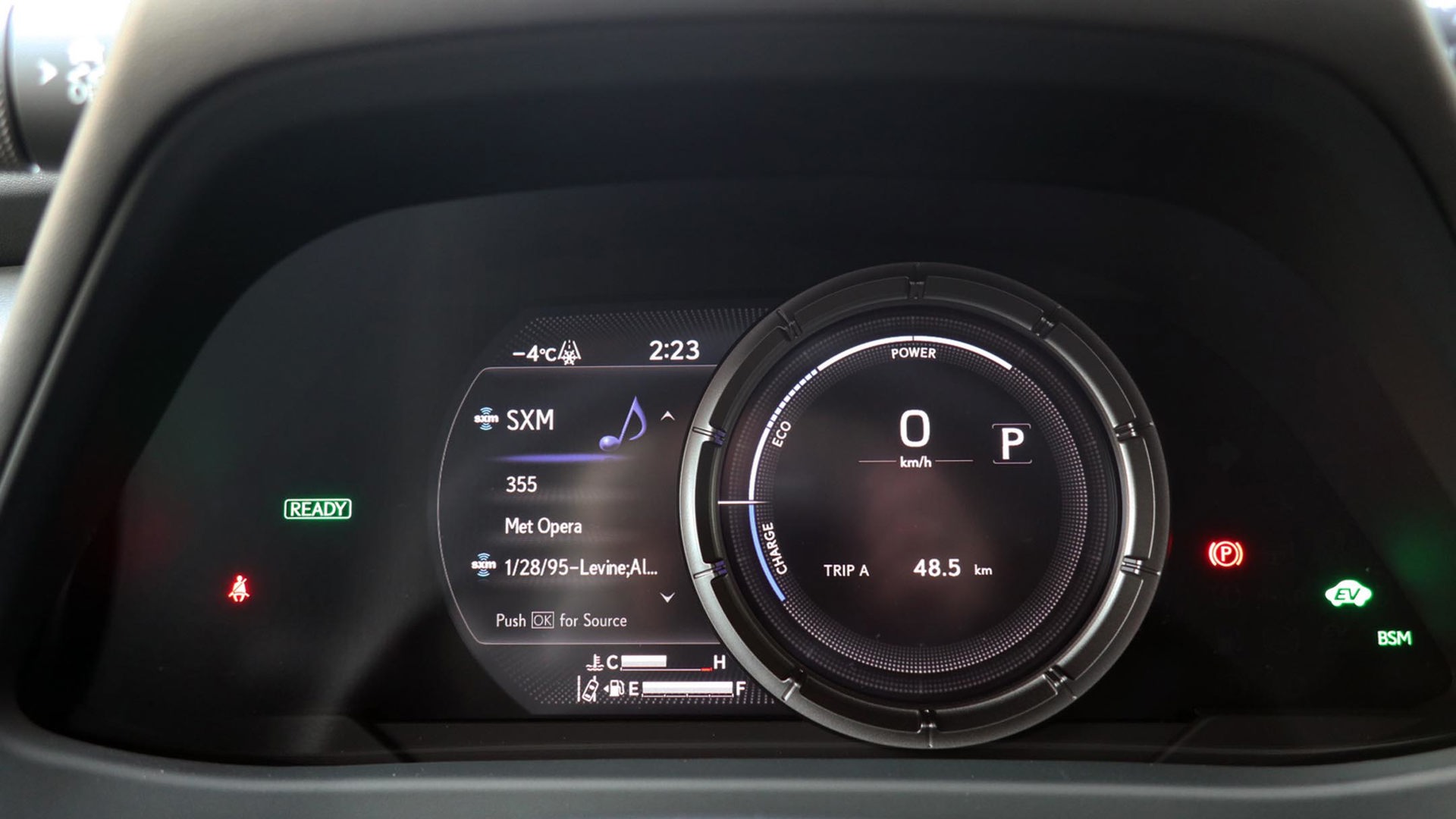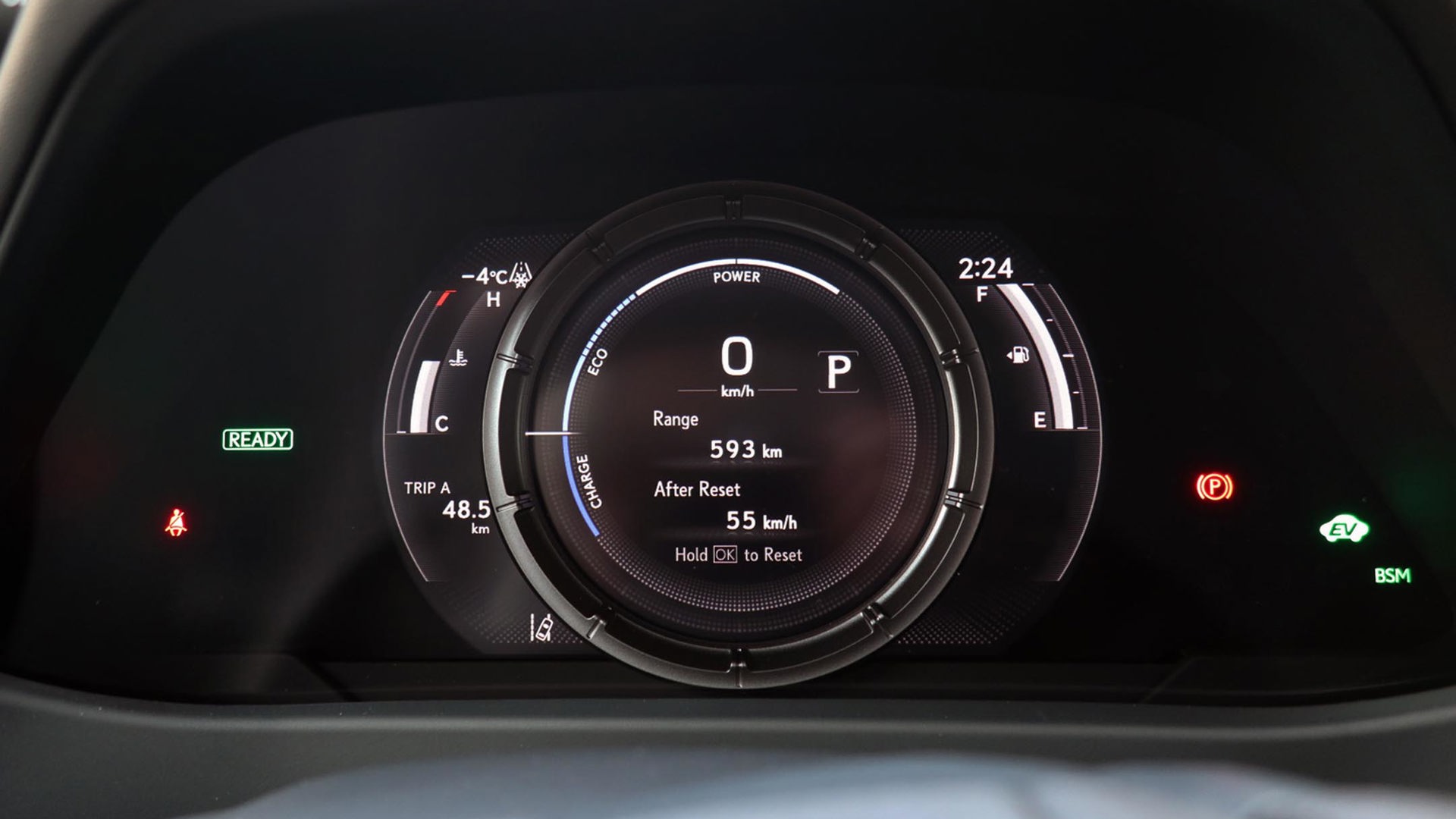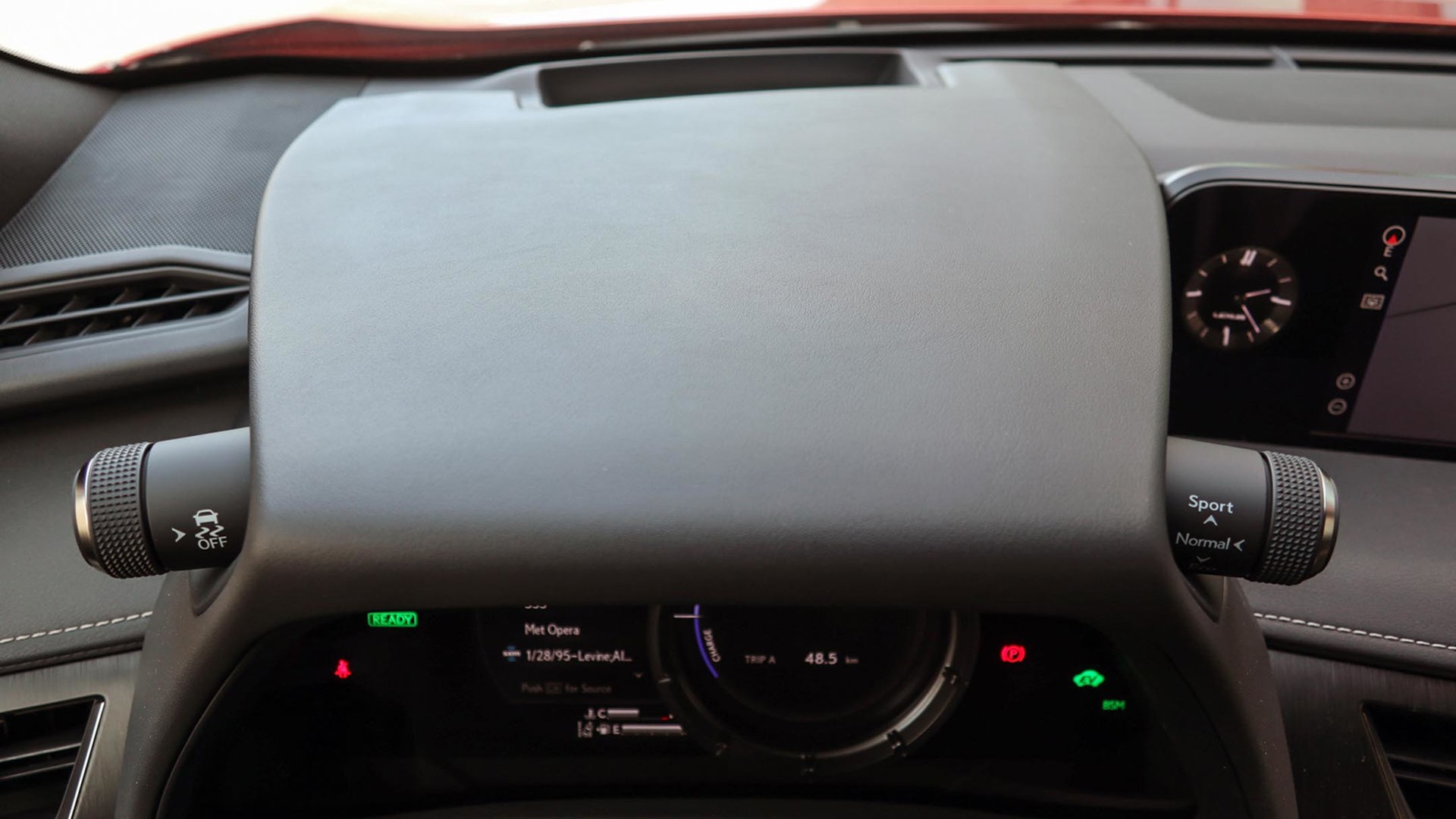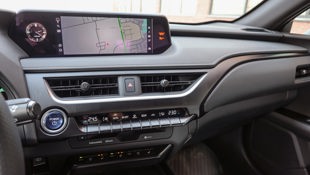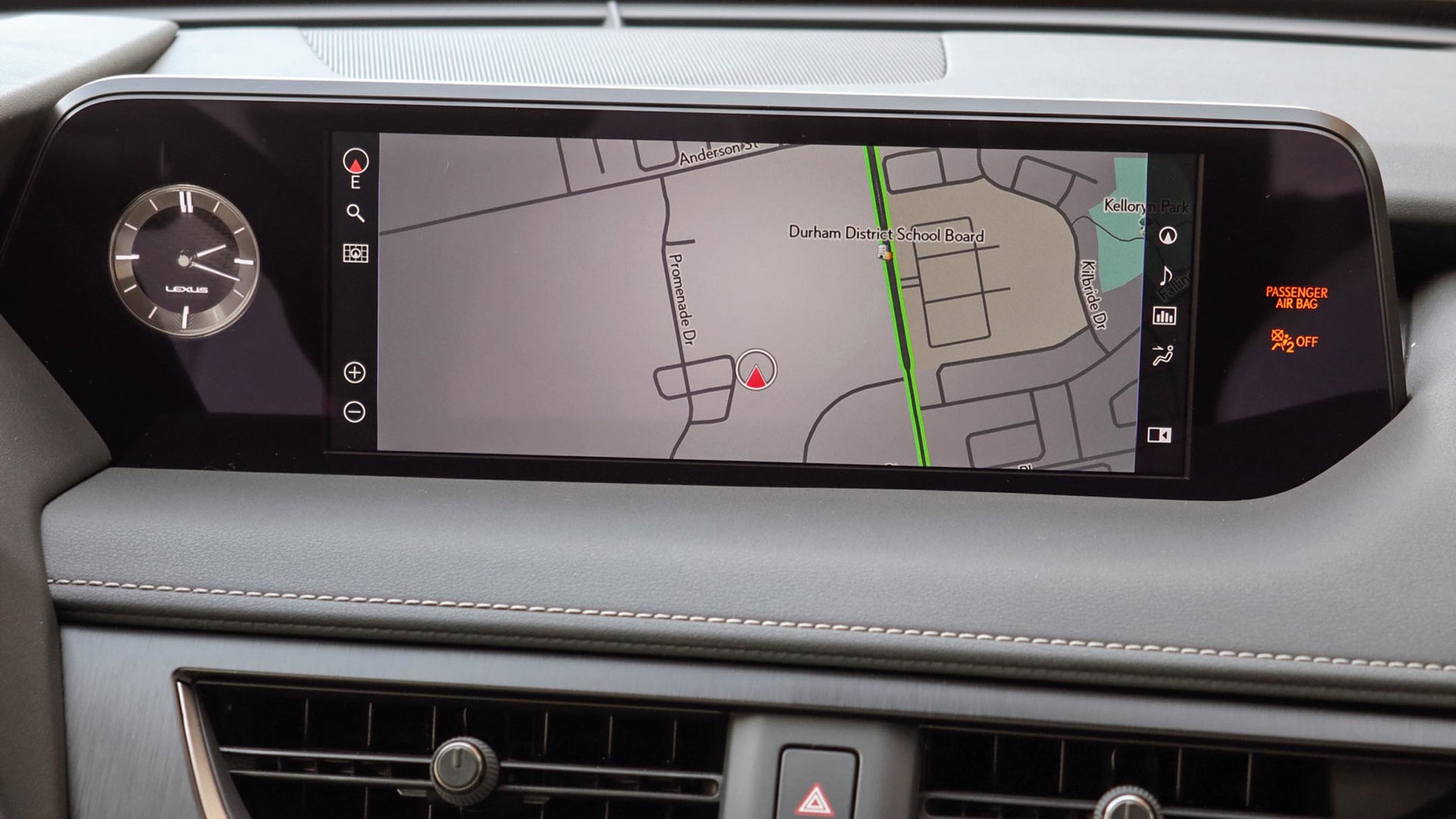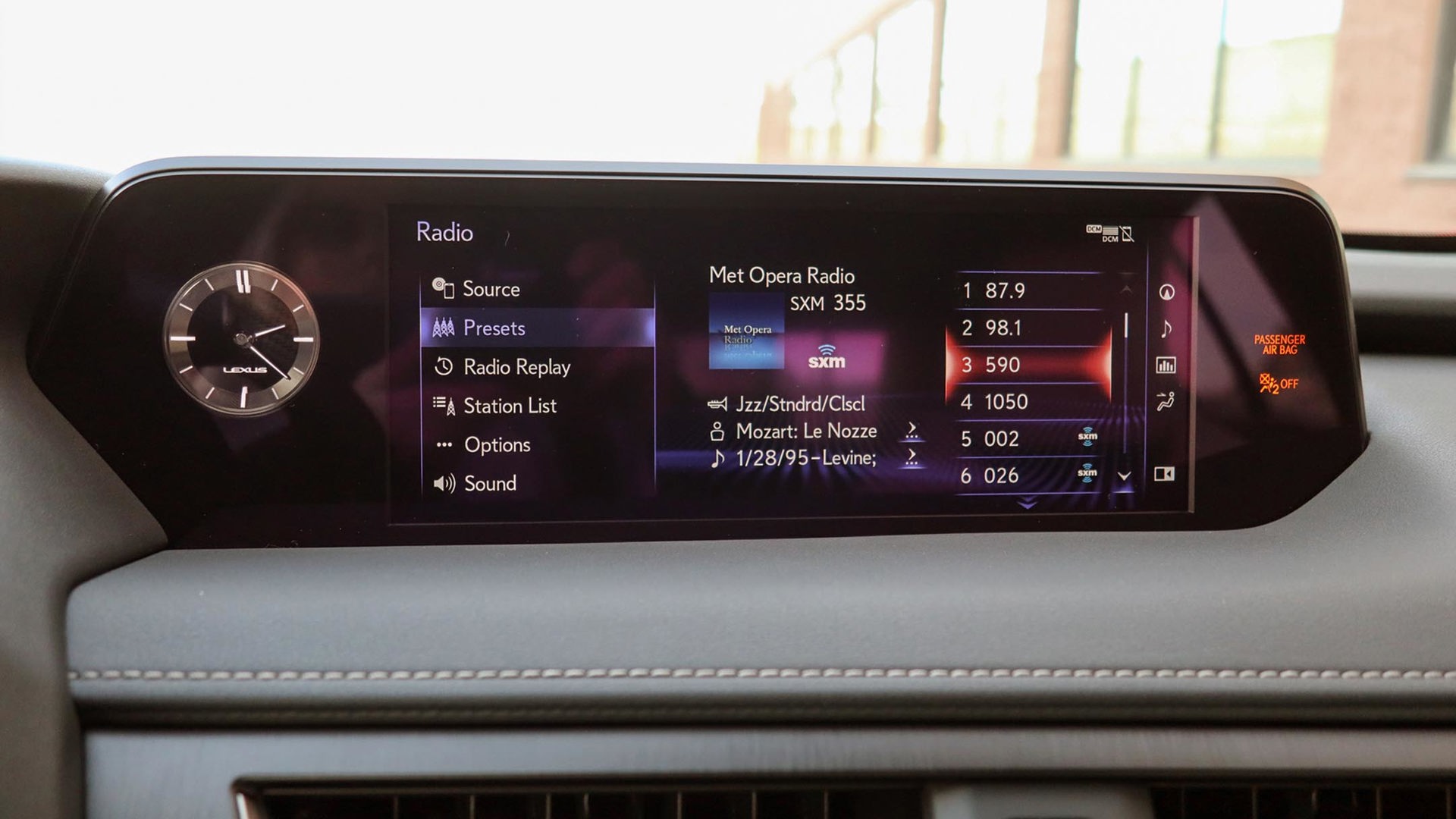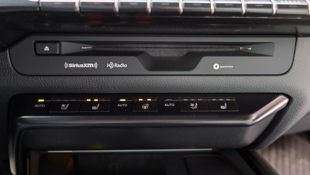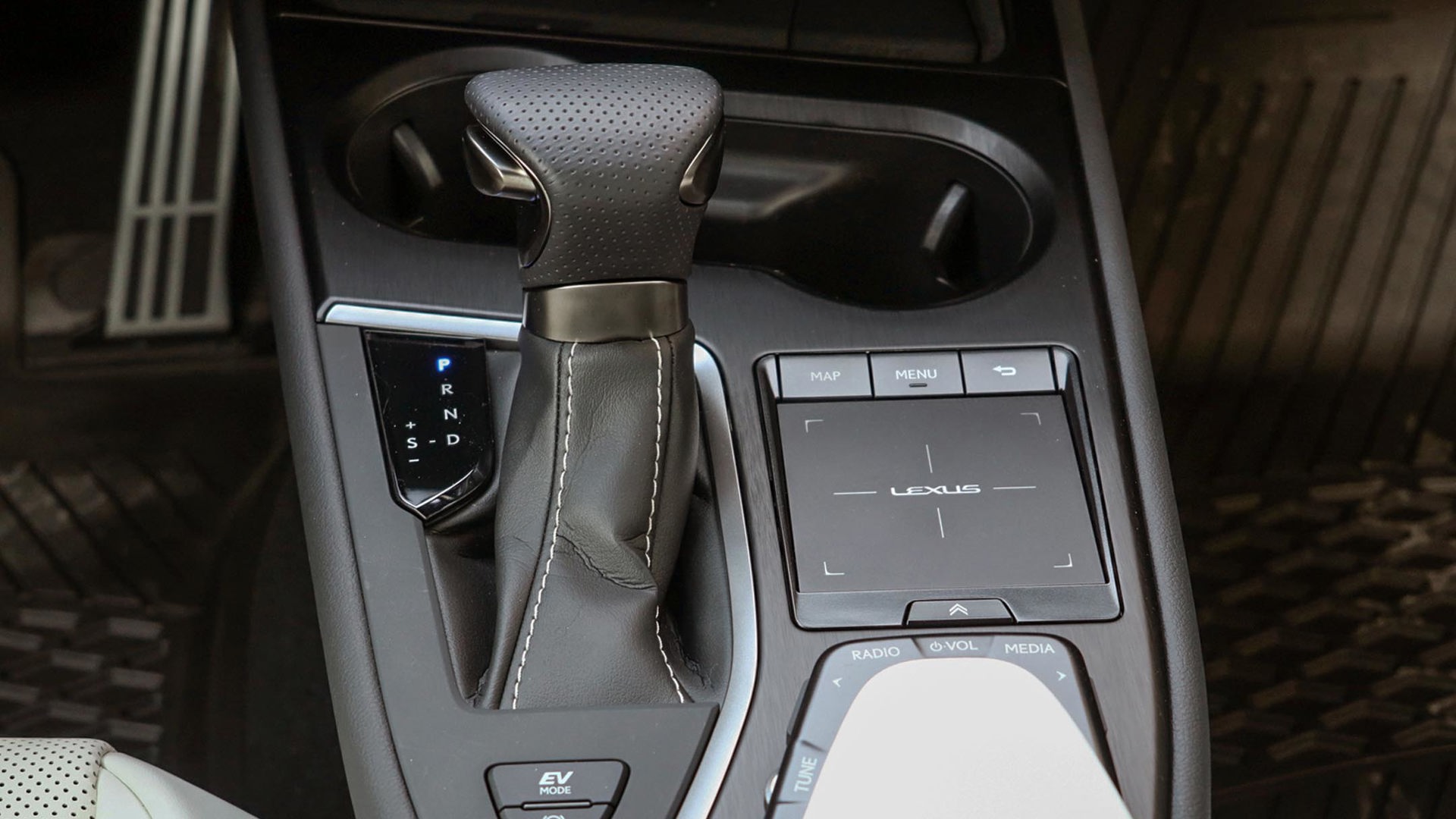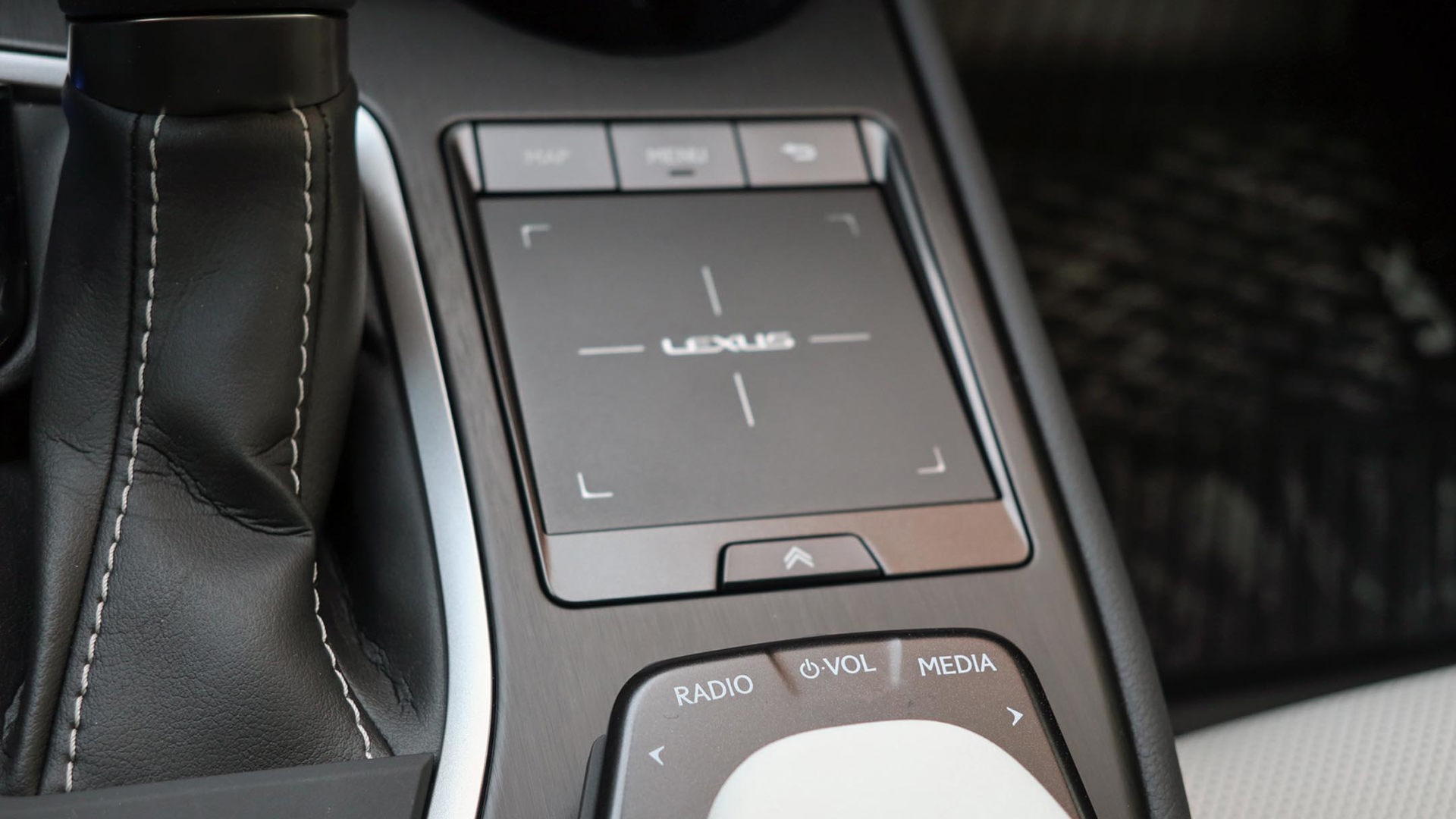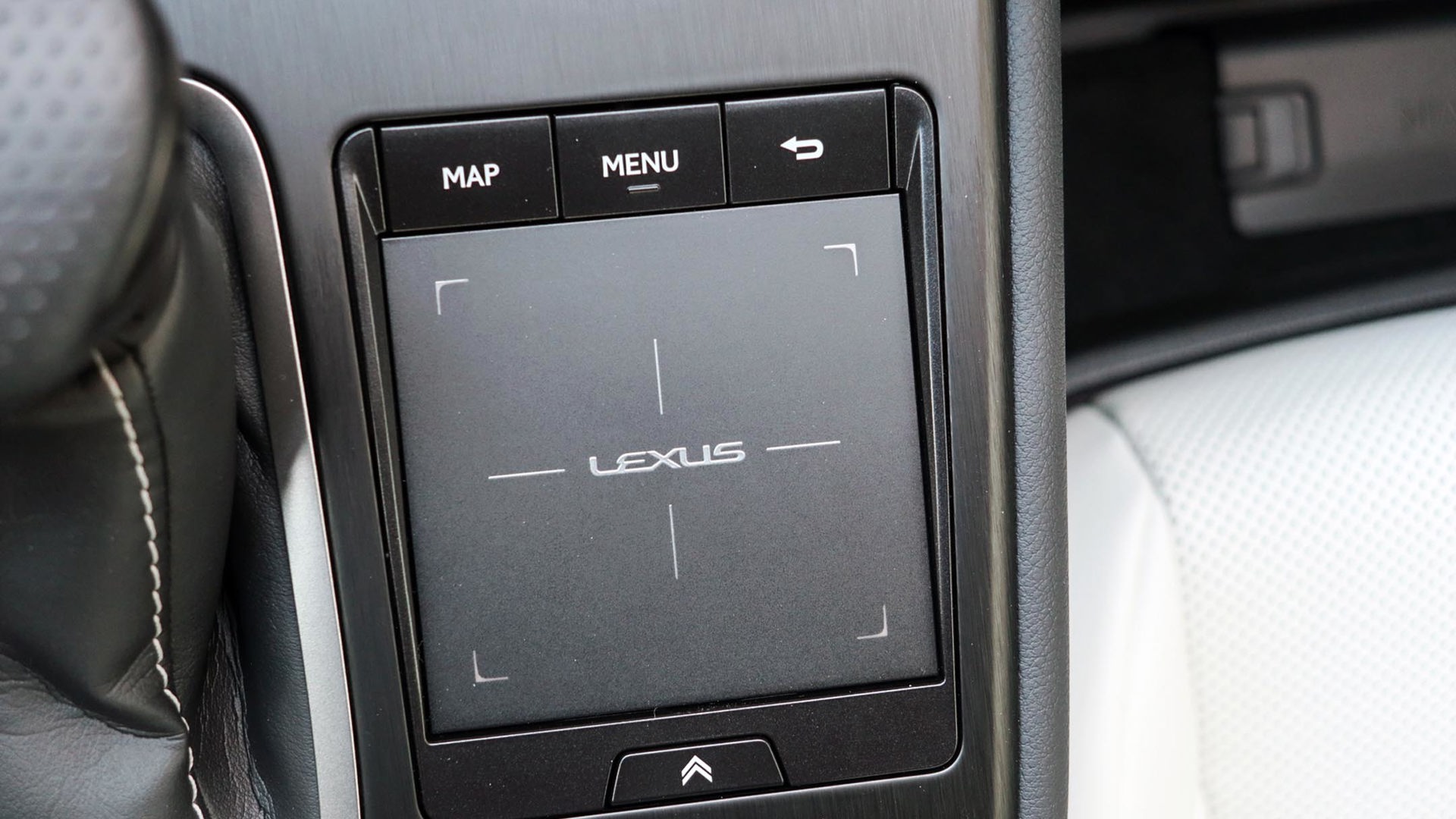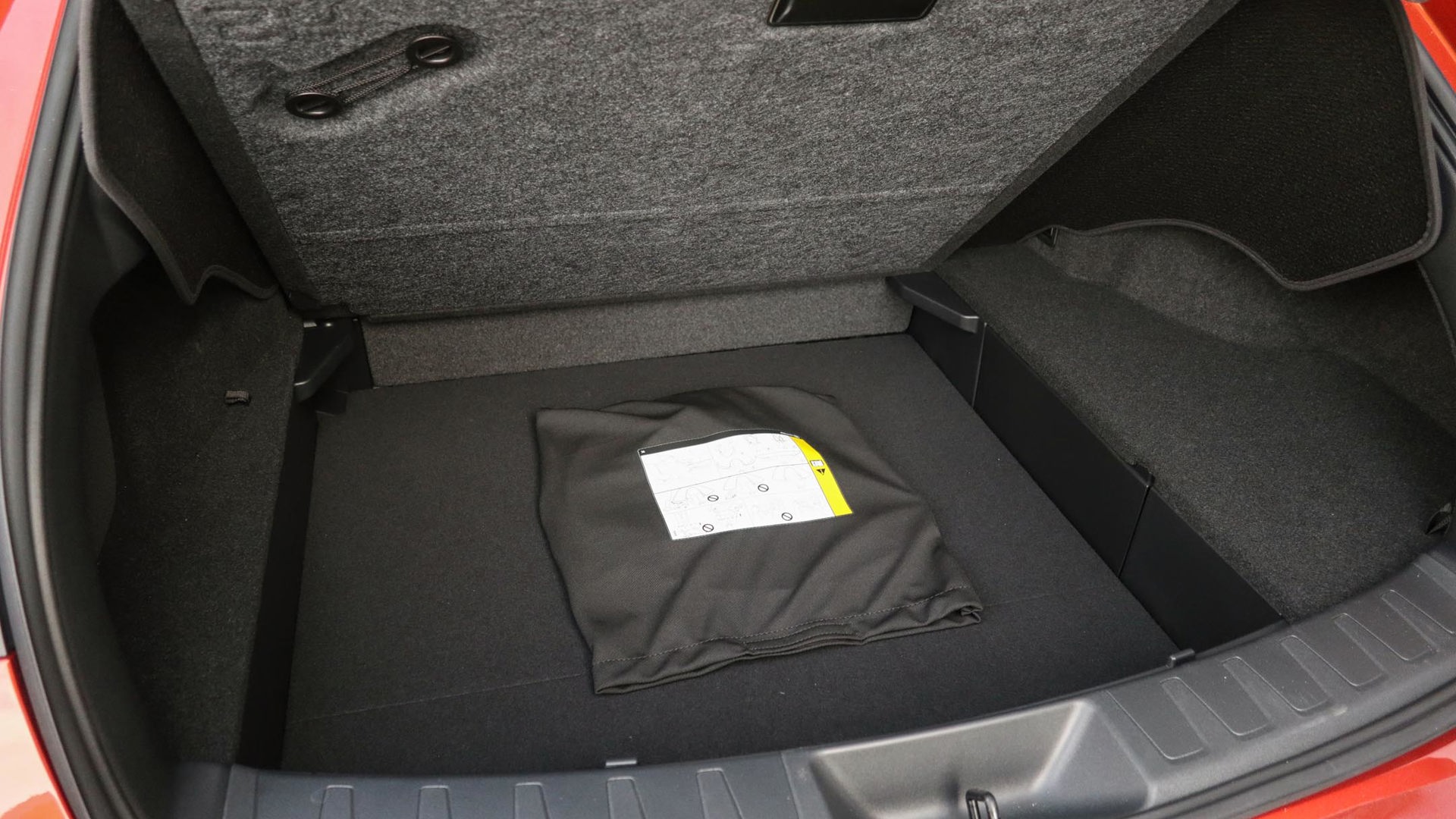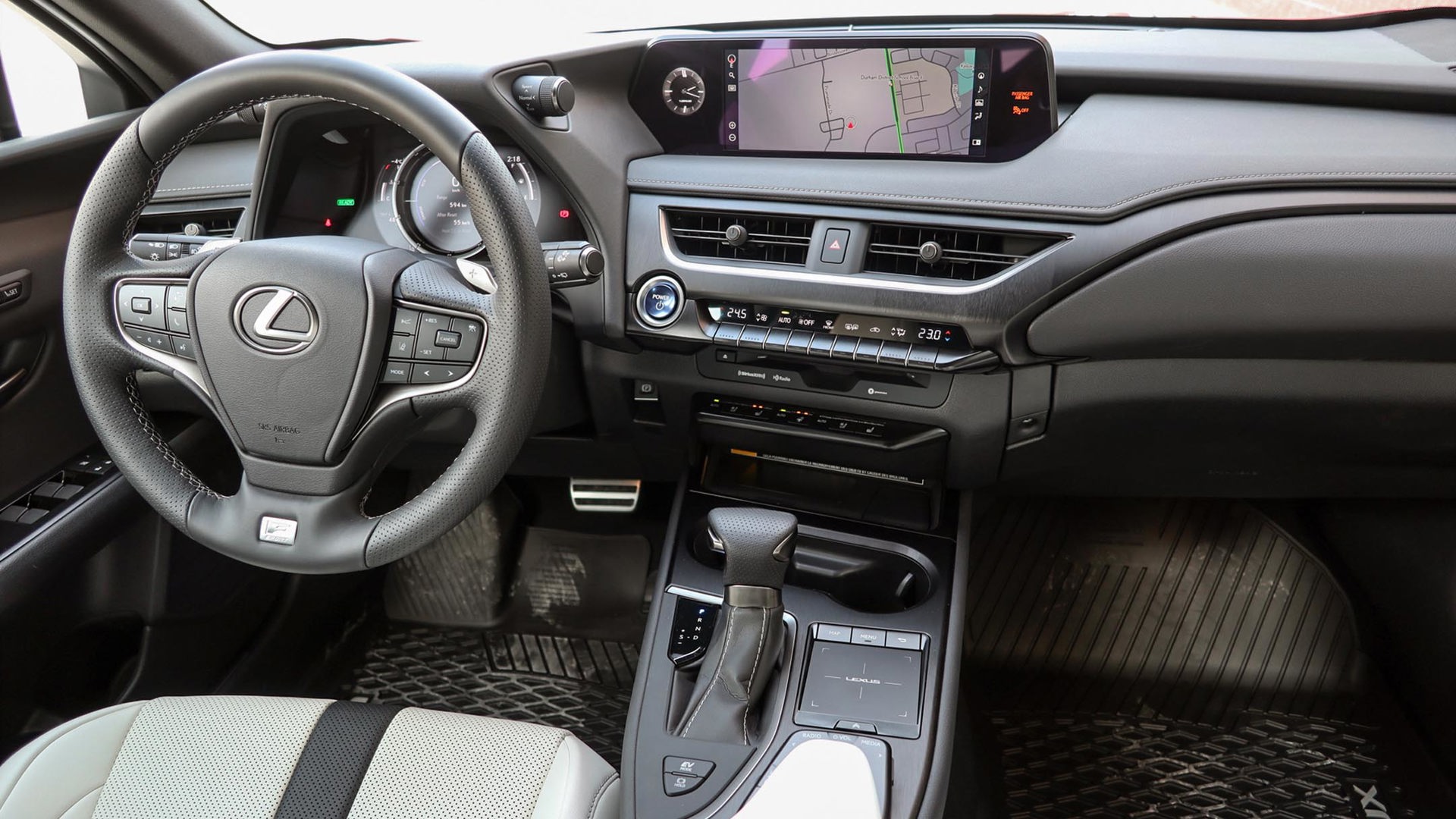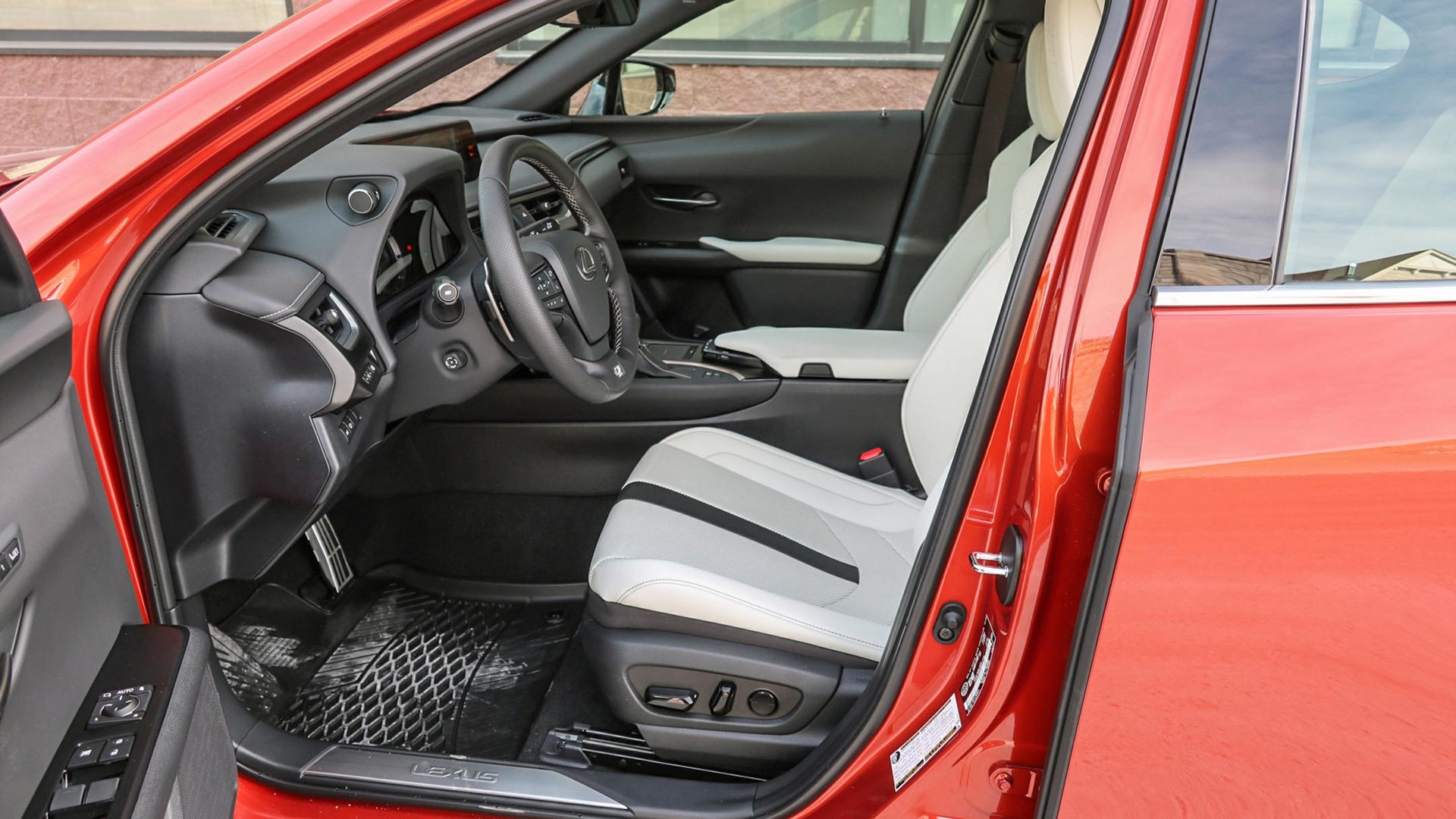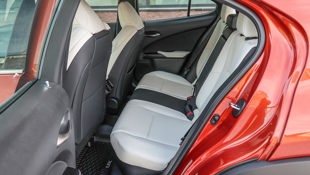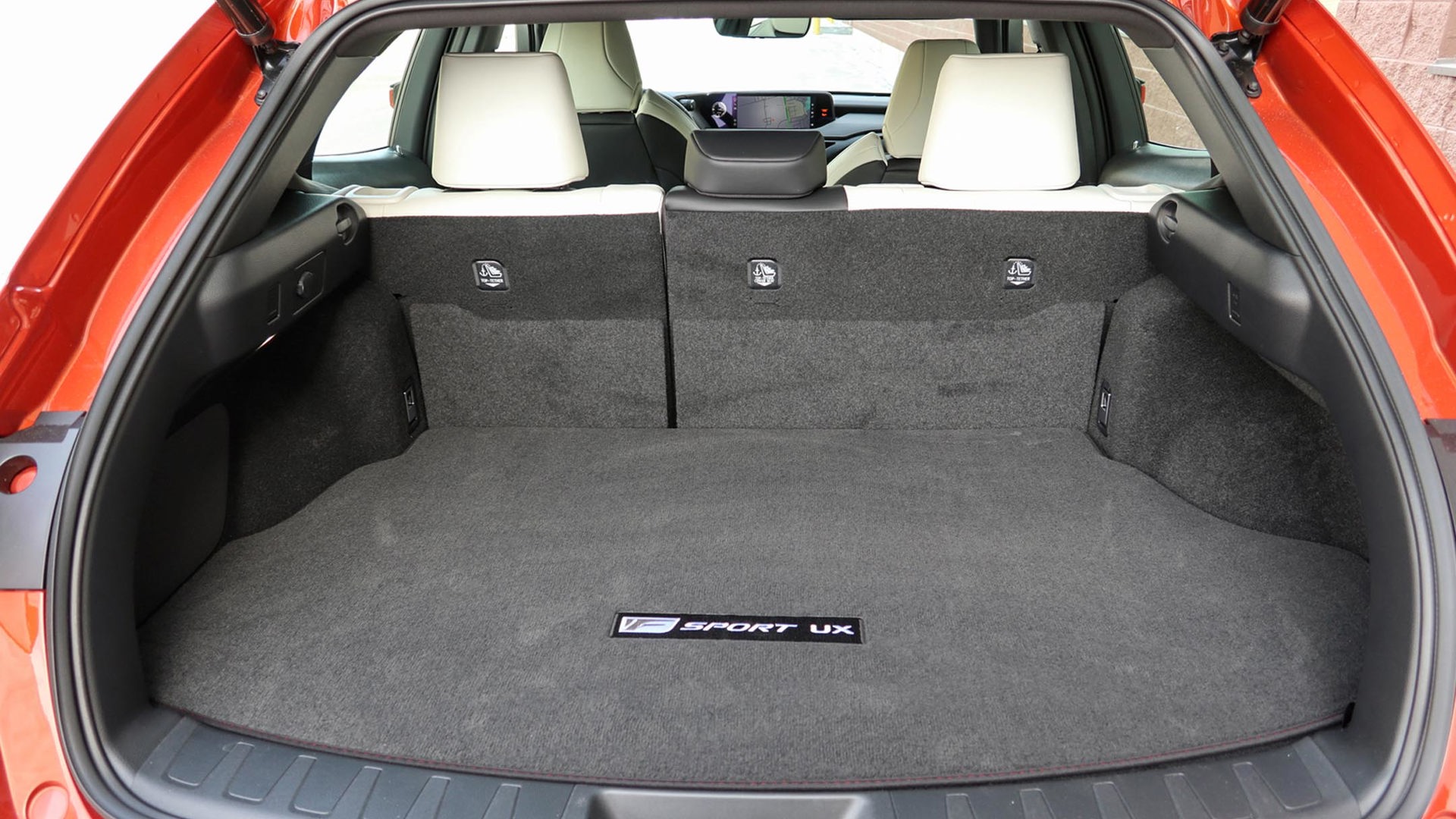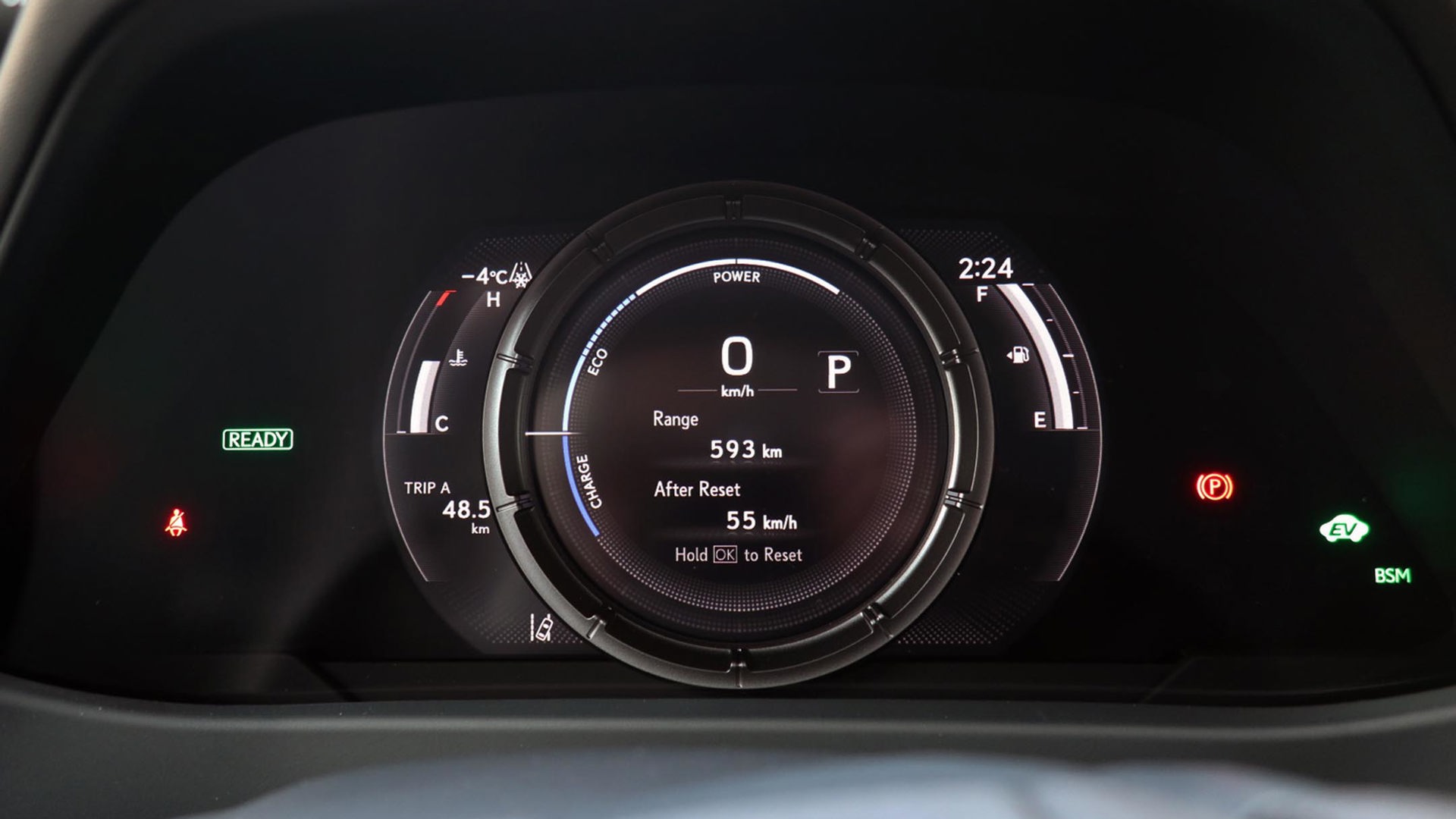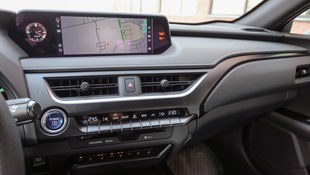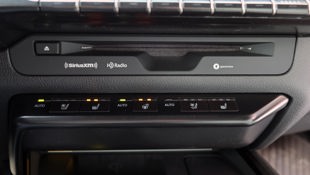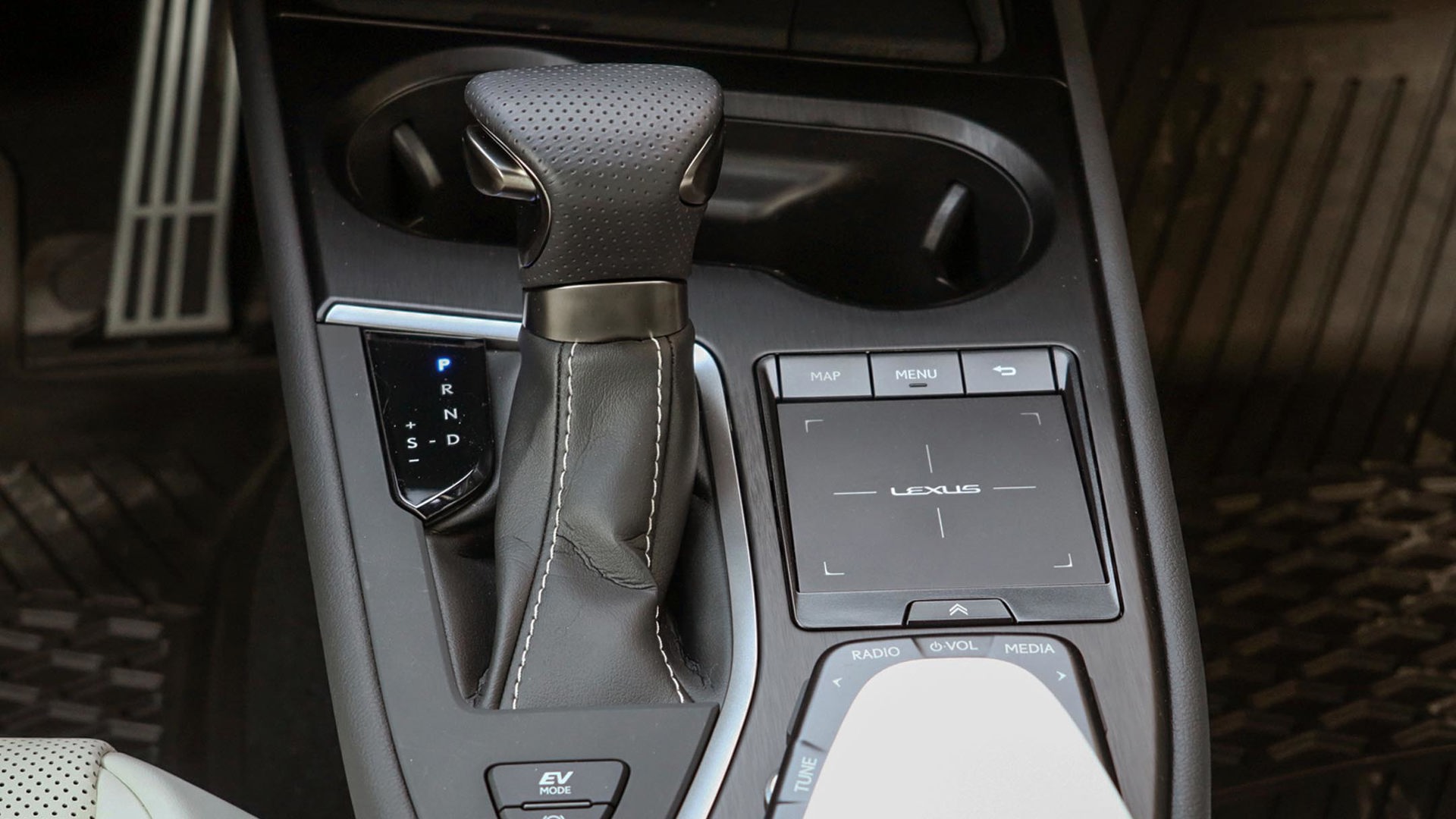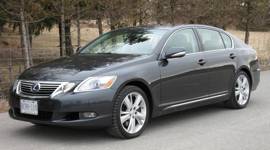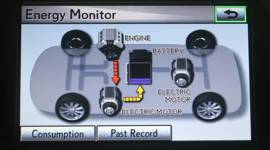 AutoTrader SCORE
AutoTrader SCORE
-
STYLING8/10
-
Safety9/10
-
PRACTICALITY6/10
-
USER-FRIENDLINESS5/10
-
FEATURES8/10
-
POWER7/10
-
COMFORT8/10
-
DRIVING FEEL8/10
-
FUEL ECONOMY8/10
-
VALUE8/10
As drivers increasingly move out of cars and into SUVs, automakers are producing sport-utes in every possible segment to woo them in.
At Lexus, the subcompact contender is the UX, first introduced a few years ago. It starts out as the front-wheel-drive, gasoline-only UX 200, and is priced at $38,450. If you want all-wheel drive, you must move up to my 2021 Lexus UX 250h tester, which comes strictly as a hybrid and begins at $40,250. Mine was further optioned with an F Sport Series 2 package, which tacked on a lot of items but added $8,800 to the price, plus a coat of Cadmium Orange paint for $650, bringing my tester to $49,700 before freight and taxes.
Styling: 8.5/10
The UX is a nicely styled little thing, especially with my tester’s premium-cost shade of orange. I’m not a fan of Lexus’s signature spindle grille on larger vehicles, where it overpowers the nose, but it’s a better fit at this smaller version. LED headlights with washers are standard equipment. At the rear, everything’s angular enough to be interesting without going overboard.
The cabin is top-notch for its design and high-quality materials. The centre infotainment screen is tucked into the dash, so it doesn’t have the look of a tablet glued there as many vehicles do. A couple of features make their way over from Lexus’s top-end performance models with the F Sport addition, including driving mode and traction control stalks on the sides of the instrument cluster shroud – where they remind me of Frankenstein’s monster’s neck bolts – and the speedometer, which physically slides across the cluster when you hit the menu button so digital items can be displayed.
Safety: 9.5/10
The Insurance Institute for Highway Safety (IIHS) gives the Lexus UX its Top Safety Pick award. It also gets a “Good+” rating for child seat latch ease-of-use. The United States National Highway Traffic Safety Administration (NHTSA) hands it a top five-star rating overall.
All of the UX’s high-tech safety items come as standard equipment. The list includes lane-keeping assist, emergency front braking with pedestrian and cyclist detection, adaptive cruise control, automatic high-beams, blind-spot monitoring system, and, of course, the back-up camera that’s mandatory on all new vehicles.
Features: 8.5/10
This being a Lexus, the list of features is pretty much as you’d expect. Included are such items as heated and ventilated front seats in faux leather, dual-zone automatic climate control, a heated steering wheel, auto-dimming rearview mirror, rain-sensing wipers, and a power sunroof. You also get a seven-inch display screen with Apple CarPlay, Android Auto, and satellite radio, all controlled by the standard Lexus Remote Touch interface – and I’ll complain about that later.
My optional F Sport Series 2 package added such items as paddle shifters, LED fog lights, unique seats and steering wheel, wireless charging, driver’s-side memory, head-up display, 10.3-inch screen with navigation, adaptive triple-beam LED headlights, a hands-free tailgate, and F Sport styling cues.
User Friendliness: 5/10
My low score here is due almost entirely to functions that are maddeningly difficult and very distracting, thanks to the laptop-style touchpad used for infotainment control. For some inexplicable reason, Lexus wants its cars to resemble computers – for that matter, years ago, it even had an equally bad controller that resembled a mouse. Good idea on your desk; bad idea on bumpy roads.
The screen isn’t touch-activated, and you use the touchpad to move a cursor on it. “Curse” was the operative word as I tried to land accurately and then click while driving. Radio functions are handled through a separate set of dials awkwardly positioned on the console, and which are only slightly better than through the touchpad. The only saving grace is hard buttons for the climate functions, and heated wheel and seats.
Practicality: 6.5/10
The UX is a tiny vehicle and that naturally means limitations. Even so, there are several small vehicles that make more out of their footprint.
The rear seat is very tight, and while that sloping rear hatch is stylish, it cuts into the cargo compartment. The bi-level cargo floor lifts to reveal a bin below it, and the rear seats fold down for more space, but the liftover into the cargo compartment is relatively high and the hatch opening is small. With the touchpad and radio dials in the console, small-item storage suffers a bit also.
Comfort: 8.5/10
The front seats are nicely sculpted and bolstered, and very supportive; once you’re in them, they’re good for long-distance drives. The rear seats are also well-done in themselves, but that lack of space limits their usefulness. Think of the UX as a two-adult vehicle that can also carry children or, in an absolute pinch, rear-seat folks for a short distance.
Although you might not expect it of such a small vehicle, the UX has a very well-planted and smooth ride, with bigger-car comfort over bumps. This little car is going to pleasantly surprise you with its road manners.
Power: 7.5/10
The UX 250h is powered by a 2.0L four-cylinder engine, mated to a hybrid system with electric motors and nickel–metal hydride (Ni–MH) batteries. Lexus believes in “less is more” information, because it only reveals a combined 181 hp, when the gas engine and electric motor are working in tandem, and no torque figure. As with other Toyota/Lexus hybrid systems, it automatically and seamlessly switches between gasoline, electricity, or a combination, depending on what’s best for the driving conditions.
That engine/motor power goes to the front wheels through an automatic continuously variable transmission (CVT). The F Sport package’s paddle wheels can be used to sequentially “shift” it between pre-set points that feel like gears. A second electric motor powers the rear wheels when all-wheel drive is required. The hybrid system self-charges through regenerative braking, and the UX doesn’t get plugged in.
Driving Feel: 8/10
My score here is the average between what’s good and what’s less-than about the UX 250h’s performance. On the less-than side, the hybrid system’s weight means the vehicle is small but heavy, and the UX is pokey. When you want passing power, the CVT responds with a moaning, rubber-band feel that was engineered out of most continuously variables a while ago.
What’s good is that once you get it up to speed, the UX is great fun to drive. The steering is quick and responsive, it curves around corners smoothly, and while “nimble” and “agile” may be cliches, they fit this vehicle exactly. The engineers have tuned this steering and suspension just right.
Fuel Economy: 8.5/10
Natural Resources Canada (NRCan) officially rates the UX 250h at 5.7 L/100 km in the city; 6.2 on the highway; and 6.0 L/100 km in combined driving. And yes, those numbers are in the right order. Most vehicles get better highway fuel economy, but hybrids do their best at lower city speeds, where they have more opportunity to run fuel-free on battery power.
I had my tester during a very cold week, with the heater, seats, and wheel set on high most of the time, so I wasn’t surprised to register 8.2 L/100 km. I initially thought I was getting much poorer mileage, because I had to fill up much sooner than expected, but it’s because the UX has only a 40-L fuel tank. The fuel requirement is regular-grade, which helps keep costs down.
Value: 8/10
The UX 250h starts at $40,250, and for that you get a load of features, and that fabulous interior. But you’ll have to top it up if you want more from the three available option packages, which range from $2,000 to $8,800.
It’s difficult to compare this Lexus head-to-head with other brands, because its small, premium-brand competitors don’t have hybrid powertrains. Some of those include the Mercedes-Benz GLA-Class, starting at $42,400; Audi Q3 at $37,250; and BMW X1 at $39,990.
The Verdict
Generally, I find most vehicles hit the middle, with perhaps one or two items that under- or outperform the average. Instead, the Lexus UX is way out on either side. It’s delightfully fun to drive, but it’s slow and its transmission moans. Its interior is among the best on the market, but it’s got that ghastly control interface. The seats are incredibly comfortable, but there’s no rear room. And it’s a hatchback for function, but cargo space is small. If you’re considering the UX, consider it carefully. Add up the pluses and minuses, and figure out which column wins for you before you plunk down your cash.
| Engine Displacement | 2.0L |
|---|---|
| Engine Cylinders | I4 |
| Peak Horsepower | 181 hp @ 6,000 rpm (gas/electric net) |
| Peak Torque | N/A |
| Fuel Economy | 5.7 / 6.2 / 6.0 L/100 km cty/hwy/cmb |
| Cargo Space | 487 L |
| Model Tested | 2021 Lexus UX 250h AWD |
| Base Price | $40,250 |
| A/C Tax | $100 |
| Destination Fee | $2,095 |
| Price as Tested | $51,895 |
|
Optional Equipment
$9,450 – F Sport Series 2 Package (Intuitive parking assist, digital instrument cluster, garage door opener, auto-dimming rearview mirror, paddle shifters, wireless charging, driver’s side memory, adaptive triple-beam LED headlamps, LED fog lamps, head-up display, navigation, trials for Enform Remote, Safety Connect and Service Connect, active sound control, hands-free liftgate, 10.3-inch display screen, 18-inch F Sport wheels, F Sport seats and steering wheel, F Sport grille, reverse-tilt mirrors, LED cornering lamps, wallet-size smart key), $8,800; Cadmium Orange paint, $650
|
|

